CHINNOCK, CHARLES EDWARD (1845-1915). Rank unknown, 47th Regiment, New York State Militia, Company A; second class fireman, United States Navy. Born in London, England, his family immigrated to the United States in 1848 and originally settled in Connecticut. Chinnock’s pension record indicates that he used the aliases Frank Watts and Charles E. Eaton and that he served in the 47th New York (unknown rank) and as a second class fireman on the USS Ohio and USS Sacramento. Further details are not available.
Civil War Bio Search
A manufacturer of telegraph instruments and a pioneer in the electric light and telephone industry, Chinnock began his career as a telegrapher and then became an associate of Thomas Edison. In 1869, he received a patent for an oil can that contained an internal tube. On December 26, 1878, he applied for a patent to improve the telephone by combining an electric circuit, a vibrating diaphragm and circuit governor that would increase the volume and transmit the sound more distinctly over longer distances. The Brooklyn Directory for 1880-1882 lists him as an electrician and Brooklyn Directory for 1885-1886 cites him as a superintendent at 257 Pearl Street in Manhattan. He was superintendent of the first central station of the New York Edison Company and then became founder of the Edison Electric Illuminating Company of Brooklyn. Chinnock was also the chief electrician of the Metropolitan Telephone Company, later the New York Telephone Company.
An inventor, he patented an automatic transmitter for teaching telegraphy and a method for suspending aerial cables. In 1894, he developed a kinetoscope, an early motion picture device, that differed from Edison’s and that was a fixture of many of bars and cafes in New York. He may have been a brother of George Chinnock (see). According to his obituary in the New York Sun, he last lived at 157 Sixth Avenue in Brooklyn, where he had lived for twenty-seven years. He was survived by his wife and two children. Mary Lahey Chinnock applied for and received a widow’s pension in 1915, certificate 800,089. Section 93, lot 6520, grave 6.
CHINNOCK, GEORGE H. (1840-1911). Private, 71st Regiment, New York State Militia, Company D. Of English origin, Chinnock served for three months with the 71st Regiment in 1861. An inventor, he obtained a patent in 1872 for the wood treatment on dominoes. In 1876, Chinnock designed five jigsaw puzzles, of 26-30 pieces, of the 1875 Chicago Exhibition Hall. The wood puzzles depicted the Art Gallery, Machinery Hall, Horticultural Hall, Agricultural Hall, and the Main Building. The Brooklyn Directory for 1880-1882 lists him as an inventor; at that time, he lived at 105 Dean Street. In 1900, his application for pension was granted, certificate 1,034,793. He may have been a brother of Charles Chinnock (see). He died in Bath, New York, likely at the soldiers’ home there. His widow received a pension in 1911, certificate 732,001. Section 146, lot 25273.
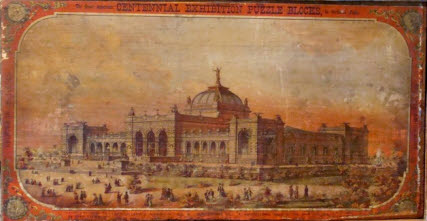
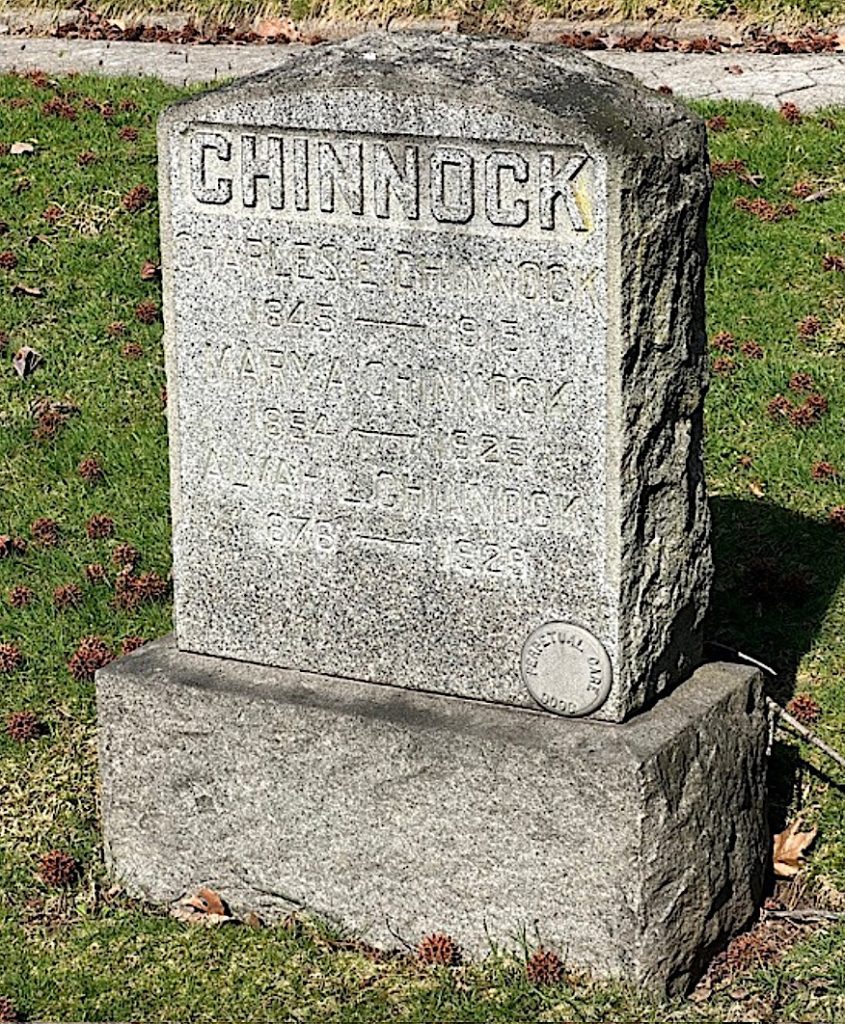
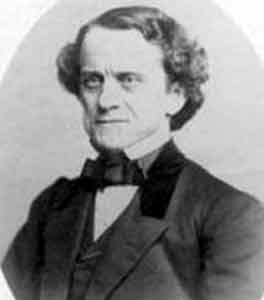
CHITTENDEN, SIMEON BALDWIN (1814-1889). Businessman and Union supporter. A native of Guilford, Connecticut, his ancestors first settled and founded that town in 1689. According to his obituary in The New York Times, two of his relatives were governors of Vermont and another relative served in Congress from 1803-1813. Chittenden attended Guilford Academy. At the age of fourteen, he was a clerk in a store in New Haven, Connecticut; then, at the age of twenty-eight, he owned a wholesale dry goods store in New York City and was living in Brooklyn. After his first wife, Mary Hartwell Chittenden, died in 1852, after fifteen years of marriage, he married Cornelia Colton in 1854; he had three children with his first wife, one of whom died as a toddler. The 1857-1862 Brooklyn Directory indicates that he worked in dry goods; at that time, he lived at 18 Pierrepont Street. By 1860, his business was among the three largest in the Union and had a large Southern trade. A Union supporter, his business was “blacklisted” by the Southern press and Southerners were told not to trade with him. On September 27, 1860, he advocated for the election of Abraham Lincoln, the beginning of his interest in national politics.
In 1861, he was a founder of the Union Defense Committee of New York and the War Fund Committee of Brooklyn. He donated $10,000 to fill the ranks of the 14th Brooklyn (84th New York), writing to Congressman Moses F. Odell (see) in October 1863, “It is my conviction that it is the solemn duty and the high privilege of all who love their country, instantly to lend their cheerful, willing, and effective aid to the great and noble effort which the President now summons the nation; and I ask you sir, to cooperate with me in such ways as your knowledge of the condition the regiment (14th Brooklyn) may suggest. I propose to raise 200 men for the Brooklyn 14th as my share of the work, and I will contribute ten thousand dollars to be divided among them, fifty dollars to each man in addition to all national, state and municipal bounties which may be available to such volunteers.” His action succeeded, the bounties were paid and additional recruitment was stimulated. In 1863, he founded the Brooklyn Union (also known as the Brooklyn Daily Union), a newspaper that fueled the patriotism of the City, and served as its managing director.
As per the Brooklyn Directories for 1866, 1867-1870, 1873-1876, and 1877, Chittenden was working in dry goods/importing; during that time, he still lived at 18 Pierrepont Street. A successful businessman, Chittenden was a vice-president of the Chamber of Commerce from 1867-1869; founder of the Continental Fire Insurance Company and Continental Bank; a trustee of the United States Trust Company; a director of the Union Ferry Company and of several railroads; and president of the New Haven and New London Railroad. Elected to Congress as a Republican in 1874, he served until 1881. During his time in Congress, he was interested in currency and tariffs, and was a member of the Coinage Committee. A fiscal conservative, he opposed an increase in silver coinage and favored legislation that kept inflation low. In civilian life, he was a founder and benefactor of the Children’s Aid Society, the Brooklyn Eye and Ear Hospital, the Brooklyn Public Library, the Brooklyn Academy of Music, and the Historical Society. In addition, he gave to the Theology Department at Yale University and sponsored a new library building there. He last lived at 18 Pierrepont Street in Brooklyn. Chittenden died from cancer. A widower, he was survived by one son. Section 5, lot 6496.
CHRISTMAS, JOSIAH N. (1839-1881). Private, 13th Regiment, New York State National Guard, Company C. As per the Brooklyn Directory for 1857-1862, Christmas was a stonecutter; at that time, he lived at 111 Cumberland Street. During the Civil War, he enlisted at Brooklyn as a private for 30 days in 1863, served with the 13th National Guard, and was discharged at the expiration of his enlistment.
The Brooklyn Directory for 1868 cites that he was still working as a stone cutter. According to the 1873-1876 Brooklyn Directory, he was in the stone/brownstone business; as indicated by the 1880 census, he was a brownstone dealer whose personal investment in the venture was $25,000. The Brooklyn Directory for 1880-1882 notes that he had a stone yard on Rutledge Street. Christmas last lived at 189 Bedford Avenue in Brooklyn. His death was attributed to tuberculosis. Section 142, lot 23995.
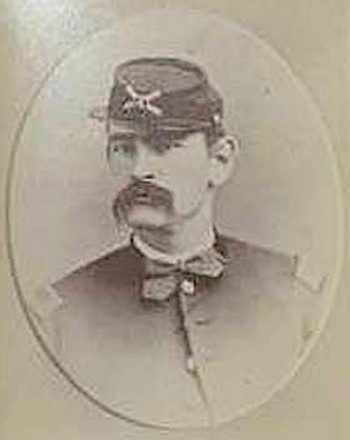
CHURCHILL, RICHARD CUYLER (1845-1879). First lieutenant, 4th United States Artillery. He was born in Savannah, Georgia. His father, Captain William Hunter Churchill, lost his life while serving with the Third Artillery in the Mexican War. One of his grandfathers, Sylvester Churchill, served as an inspector-general in the United States Army. Richard Churchill entered the United States Military Academy at West Point, New York, during the Civil War on July 1, 1862, graduating thirteenth in his class in 1866. His classmates, in their obituary to him at their reunion in 1880, described Churchill as a model of “manly beauty,” an exquisite dancer and a leader.
He was commissioned second lieutenant, 4th United States Artillery, on June 18, 1866, and was promoted to first lieutenant on July 28, during the time he was on duty at the Military Academy from July 1 through August 28, 1866. On November 22, 1866, he married Josephine Young. Subsequently, he served at the garrison at Fort Whipple, Virginia, from November 30, 1866 through April 1867, then was at Fort Delaware, Delaware, from April 5 through August 6, 1869, taking a leave of absence from August 16 through October 15, 1867. Churchill then served at West Point as an assistant professor of drawing from August 28, 1869 through August 31, 1871. He was appointed adjutant, but somehow, that appointment was revoked and Churchill tendered his resignation which was accepted on September 1, 1872.
An artist, he devoted himself to educating his children and practicing his craft. He had a studio in New York City and a home near West Point but later moved to Sing Sing where he inherited an estate. His obituary notes that he stayed close to home but traveled to Europe and nursed his children through scarlet fever but died within a week from Bright’s disease; his last words were, “It is hard to die young.” He last lived in Sing Sing (Ossining), New York. He was survived by his wife and four children. A photograph of him, taken while he was an instructor at West Point, was offered for sale on eBay in 2020. Section 90, lot 125.
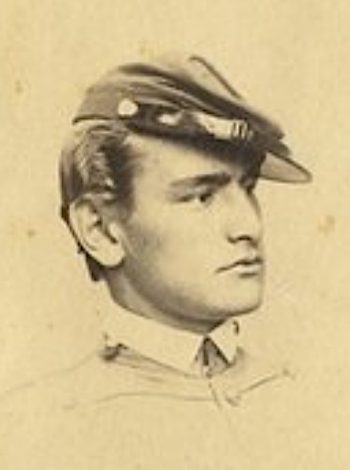
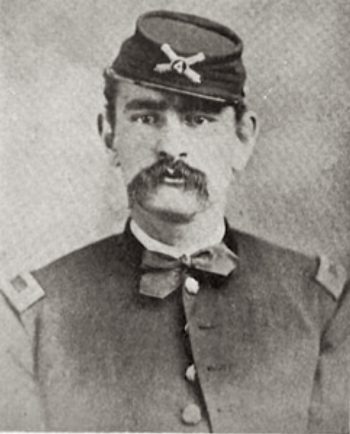
CLACKNER, WILLIAM L. (1832-1900). Private, 83rd New York Infantry, Company C. Clackner was born in Troy, New York. He was listed as a carpenter in the Brooklyn Directory for 1857-1862. During the Civil War, he enlisted as a private on May 27, 1861, and mustered into the 83rd New York the same day. He served until receiving a discharge for disability on December 31, 1862.
Returning to his trade, Clackner was listed as a carpenter in the Brooklyn Directory for 1863; at that time, he lived at 137 Bridge Street. He was listed as a builder in the Brooklyn Directory for 1873-1876. According to the censuses of 1870 and 1880, he was a carpenter. In the 1888-1890 Brooklyn Directory, he was listed as a builder. The Veterans Schedule for 1890 confirms his military status but notes he served in the 9th New York which later became the 83rd. He last resided at 391 Cumberland Street, Brooklyn. His death was attributed to pneumonia. Section B, lot 8575, grave 594.

CLAFLIN, HORACE BRIGHAM (1811-1885). Businessman and abolitionist. Businessman and abolitionist. Born in Milford, Massachusetts, he was educated there at the Milford Academy. He worked as a clerk in his father’s general store in his hometown. According to American Biography: A New Cyclopedia, Volume 2 (edited by William Richard Carter), in 1831, Claflin, after his father died, joined his brother and brother-in-law to take-over the business; soon after, they opened another store in Worchester, Massachusetts. The business specialized in dry goods and soon became a leading establishment in New England. Horace Claflin then relocated in New York City in 1843 and formed a partnership there. Beginning in 1851, the new firm of Claflin, Mellen & Co. extended its business throughout the Union and soon took a position against slavery. The Brooklyn Directory for 1858 lists him as the treasurer of the Children’s Aid Society. In 1859, Claflin announced that he was “an uncompromising friend of freedom” and was proud to be on a list of “Black Republicans,” who were held up to public scorn for their disapproval of slavery. Claflin said that “his goods were for sale but not his principles.”
In 1861, at the outbreak of the Civil War and with a new building at Church and Worth Streets, Claflin’s business lost half of its assets when trade was suspended between North and South; Claflin asked his creditors for time and concessions but many creditors did not comply and his business lost about $1,000,000. However, during one year of the Civil War, his firm had $72 million in sales, a sum it never again reached. He is listed as being in dry goods in the Brooklyn Directories for 1864 and 1864. In 1864, after his partner retired, the enterprise was known as H. B. Claflin & Co. The company dealt in lace goods, white goods, flannels, blankets, hosiery, shirts, underwear, scarves and gloves. Claflin was known for his generosity and many of his employees and needy individuals were recipients of his gifts. He also refused to deal with those who tried to extort money from him and for that, was admired by fellow businessmen. He was listed as being in the dry goods business in the Brooklyn Directories of 1866 and 1868.
In 1870, he was one of the founders of the Continental Bank of New York. His firm and reputation grew after he promptly paid off debts during the financial panic of 1873. In an interview with the New York Herald about the panic on September 22, 1873, Claflin stated that he did not think that the situation would have a permanent effect on trade and that the credit of the country was “at the bottom, good.…” His obituary in the Daily Graphic, which refers to him as a millionaire merchant, notes that although he was a Republican in political life, he supported the election of the Democrat, Grover Cleveland, for president in 1884. Horace B. Claflin Post #578 of the G.A.R. is named in his honor. He died at his country home in Fordham, New York. His death was attributed to a stroke.
The Reverend Henry Ward Beecher (see) officiated at his funeral which took place at Claflin’s Brooklyn residence at 55 Pierrepont Street. As per his obituary in the New York Daily Graphic, he was one of the original 21 trustees of Plymouth Church and was known for his generosity. An article about his funeral in The New York Times quoted Beecher:
…He had for 40 years been connected with Plymouth Church, and from him we never had aught but sympathy, confidence and affection; and therefore on Sunday morning next I shall hold a memorial service in the church, and thus the wishes of his home life and those of his public life will have been carried out….In all the broad expanse from the Atlantic to the Pacific on the frontier, in the intermediate villages, wherever traffic is carried on, there is no name so familiar as his, and in all these millions there is not one base enough to cast a slur upon his memory, or to say that he was not worthy of the respect which he won everywhere. His word and life were truth, conscience, and honor, and no man ever won a higher title than he, who has come out of the conflict with clean hands, an honest heart, and upright conscience….
The funeral attracted prominent businessmen from near and far and throngs of friends and community, far too many to be inside the church for the services. He was survived by his widow, Agnes Sanger Claflin and two sons; two children predeceased him, one of whom was a toddler. As per documents from the New York State Assembly for 1896, Claflin was listed among the signatories for the granite tablet honoring John Brown, the famous abolitionist, at a park in North Elba where the Brown family once lived, bearing the inscription, “John Brown’s Farm, Dedicated to the People of the State of New York.” Section 36, lot 11026.
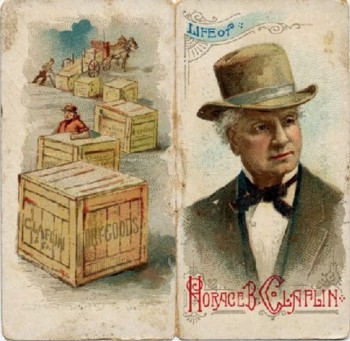
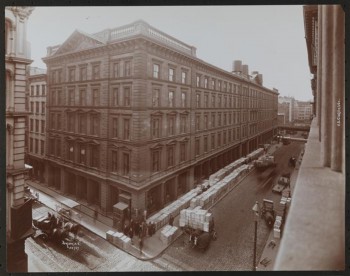
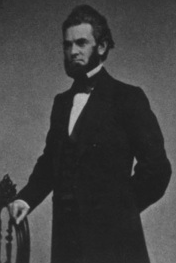
CLAPP, ALEXANDER HUNTINGTON (1818-1899). Chaplain, 10th Rhode Island Infantry. Born in Worthington, Massachusetts, he lived in Lawrence, Massachusetts, and married Emily Payson Copeland in 1845. He relocated in 1855 to Providence, Rhode Island, where he was ordained as the fifth pastor at the Beneficent Congregational Church. On May 12, 1861, he preached a sermon, God’s Purpose in the War, which was later published. During the Civil War, Clapp enlisted at Providence on May 26, 1862, was commissioned into the Field and Staff of the 10th Rhode Island as its chaplain that same day, and mustered out on August 26, 1862. He then returned to his church in Providence.
On February 13, 1866, he moved to New York City and became the corresponding secretary for the American Home Missionary Society, a position he held for thirteen years. He was awarded an honorary degree from Grinnell College in 1868. He was listed as secretary at 34 Bible House in the New York Directories for 1875-1876 and 1877-1878; at the time of the latter directory, he lived at 437 West 21st Street.Associated with the Missionary Society for 28 years, he became its treasurer and editor after his tenure as corresponding secretary. Clapp is listed as treasurer and editor at 34 Bible House in the 1880 New York City Directory. His last residence was 437 West 21st Street in New York City. Clapp died from uremia (kidney failure). As per his obituaries in the New York Tribune and the New York Herald, his funeral took place at the Broadway Tabernacle Church located at Sixth Avenue and West 34th Street in Manhattan. Section 26, lot 6051.
CLAREHUGH (or CLIREHUGH), JOHN C. (1843-1912). Paymaster’s clerk, United States Navy. Clarehugh, who was originally from New York, served as a paymaster’s clerk in the Navy during the Civil War aboard the USS Vermont, USS New Hampshire, and the USS Galena. According to the census of 1880, he was living in Elizabeth, New Jersey, and working as a fire insurance agent. He received a pension from the Navy under certificate 38,394. He last lived in Elizabeth, New Jersey. Section 15, lot 7859.
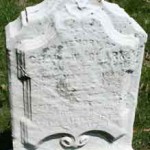
CLARK, CHARLES W. (1839-1864). First sergeant, 67th New York Infantry, Companies A and D. He enlisted at Brooklyn on May 1, 1861, as a private, and mustered into the 67th New York’s Company A on June 21. Taken as a prisoner of war after being wounded at Savage’s Station, Virginia, on June 27, 1862, he was paroled and returned on September 25, 1862, at a place not stated. On August 30, 1862, he was promoted to first sergeant. After re-enlisting on December 25, 1863, he returned to his regiment, was wounded on May 6, 1864, at Wilderness, Virginia, and was transferred to Company A on June 13. He died from chronic diarrhea on July 23, 1864, and was interred at Green-Wood on August 25 of that year. Section 115, lot 13536 (Soldiers’ Lot), grave 91.
CLARK, CORNELIUS HEYER (1843-1918). Private, 22nd Regiment, New York State National Guard, Company E. Clark, a New York City native, enlisted there as a private on May 28, 1862. After mustering immediately into the 22nd Regiment, he served for three months before mustering out with his company on September 5 at New York City.
Clark is listed as an agent in the New York City Directory for 1877, 1882-1883 and 1891-1892; during those years, he lived in New Jersey. According to the 1880 census, he lived in Elizabeth, New Jersey, and was an agent for a fur house. At the time he applied for a passport in 1884, he was 5′ 9½” tall with blue eyes, a high forehead, light brown hair and a straight nose. In 1907, he was awarded a pension, certificate 1,133,836. Clark was working as a clerk in 1900 and 1910 as indicated by these censuses. His last residence was 501 Jefferson Avenue in Elizabeth, New Jersey. In 1918, Sarah Mather Clark, who is interred with him and who belonged to the Daughters of the American Revolution, applied for and was awarded a widow’s pension, certificate 862,407. Section 11, lot 3910.
CLARK, GEORGE (1822-1864). Rank unknown, 84th New York State National Guard, Company K. As per his obituary in the New York Herald on July 20, 1864, Clark died “in defence of his country” at Washington, D.C. He was a member of the 84th Regiment, New York State National Guard. No other details are known. Papers in Belfast and Armagh, Ireland, were asked to copy his obituary. He last lived at 171 First Avenue where his funeral took place. On October 5, 1864, his wife applied for and received a widow’s pension, certificate 78,578. A minor applied for and received a pension, certificate 114,759. Section 58, lot 5279.
CLARK, GEORGE FRANCIS (or FREDERICK) (1845-1913). Private, 168th New York Infantry, Company E. At age 17, he enlisted at Peekskill, New York, the city of his birth, on November 11, 1862, for a nine-month tour of duty. He mustered in on January 23, 1863, and mustered out at Newburgh, New York, on October 31, 1863. As per WPA (Works Progress Administration) index cards of war veterans from the Westchester, New York, area, Clark engaged in actions at Walkerton and Yorktown, Virginia, during the Civil War.
A clerk in his father’s dry goods store before the war, he continued in that business after the hostilities, was a buyer of linens, and eventually became a partner in a shop on Franklin Street in Manhattan. On May 21, 1867, he married Eleanor Fraser Wills in Brooklyn; by 1871, the couple had two daughters and a son. He always lived in Peekskill, commuting to work until his death, was active in the Republican Party, and was a member of the Freemasons and Elks in his community. Eleanor Clark died in 1883.
On May 1, 1903, he mustered into the Abraham Vosburg(h) (see) Post of the G.A.R. in Peekskill. In 1907, his application for an invalid pension was granted, certificate 1,139,841. He last lived at 1879 Crompond Street in Peekskill where he died from heart valve disease. Henrietta Clark, his second wife, applied for and was granted a widow’s pension in 1913, certificate 761,445. Section 141, lot 24598.
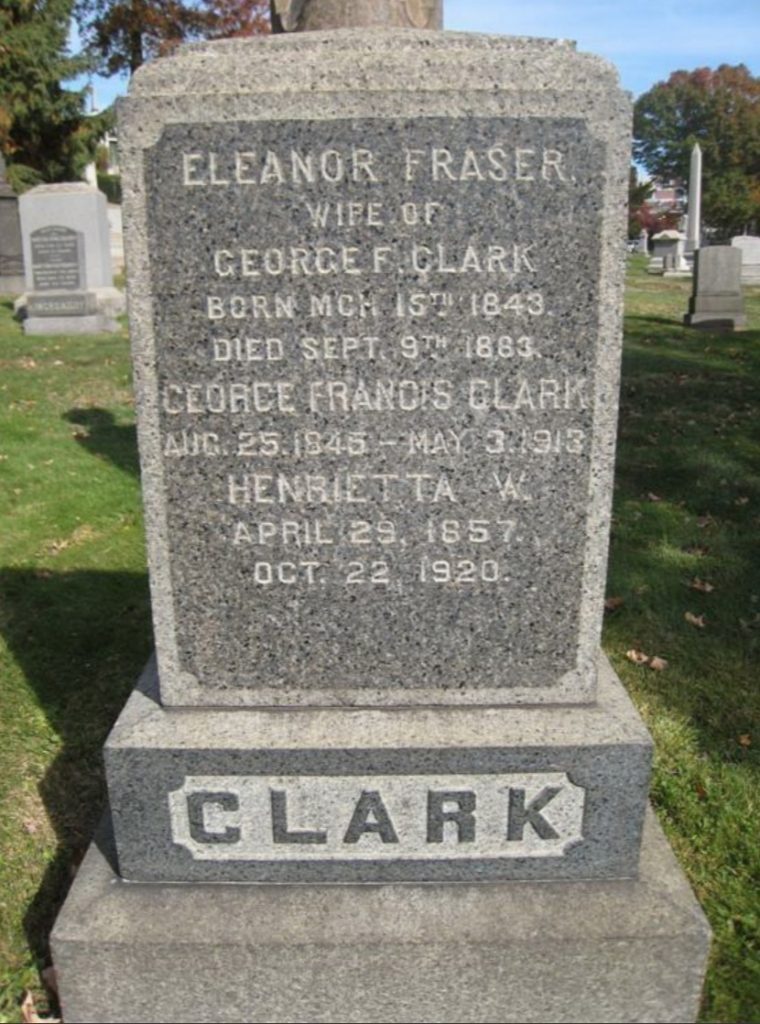

CLARK, GEORGE PUTNAM (1834-1914). Colonel, 6th Missouri Infantry. Clark was born in Waterville, New York, and was a descendant of Revolutionary War General Israel Putnam. According to Union University: Its History, Influence, Characteristics and Equipment… by George Van Vranken Raymond (2009), George Putnam Clark was educated in private schools and at P.S. 1 in Brooklyn. He began his higher education at Farmer’s College in Cincinnati, Ohio, transferred to Union College at the end of his sophomore year where he stumped for John C. Fremont, the Republican candidate for president in 1856, and from which he graduated in 1857. Although he studied law with his father, he did not set up a practice but moved to St. Louis, Missouri, where he became a successful banker and grain broker.
At the start of the Civil War, Clark enlisted as a private and mustered into the 6th Missouri. He soon became a captain by order of General Fremont and quickly rose to major, lieutenant colonel and colonel in the course of a year but declined a promotion to brigadier general because he preferred to be with his men. According to Raymond, Clark was also on the staffs of Generals Myers and Allen, and served until his discharge in 1865.
Clark spent one year as a cotton farmer in Arkansas before returning to New York in 1867 where he resumed his career as a banker and broker. He soon lost most of his fortune due to the actions of his partners. Subsequently, he was employed for many years by the R. G. Dun Company, the credit-rating firm that later merged and became the renowned Dun & Bradstreet. Active in political and civic affairs and known as “Colonel,” he was involved as a Democrat in the Twenty-third Ward, was a member of the Brooklyn Board of Education and was instrumental in the building of Manual Training High School (later John Jay) in Brooklyn. He also belonged to the Union League Club in Brooklyn. A 1907 book outlining the achievements of alumni of Union College notes that Clark was a lawyer who served as a colonel. His last residence was 215 Quincy Street in Brooklyn. Clark died from pneumonia. Section 203, lot 33431, graves 1 and 2.
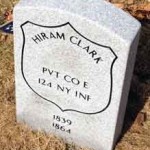
CLARK, HIRAM (1839-1864). Private, 124th New York Infantry, Company E. After enlisting as a private on August 4, 1862, at Goshen, New York, Clark, a native of Orange County, mustered in on September 5, and was discharged on October 20, 1862, at Washington, D.C. He last resided on West 32nd Street in Manhattan. He died from a liver abscess. Section 115, lot 13536 (Soldiers’ Lot), grave 87.
CLARK, HUGH (1837-1879). Private, 69th New York Infantry, Company C. Of Irish origin, Clark enlisted at Brooklyn as a private on January 27, 1864, and mustered into the 69th New York on that date. He was wounded at the Battle of Cold Harbor, Virginia, on June 3, 1864. On June 30, 1865, he was absent when his company mustered out at Alexandria, Virginia. His last residence was 201 East 114th Street in Manhattan. Section 17, lot 17245, grave 581.
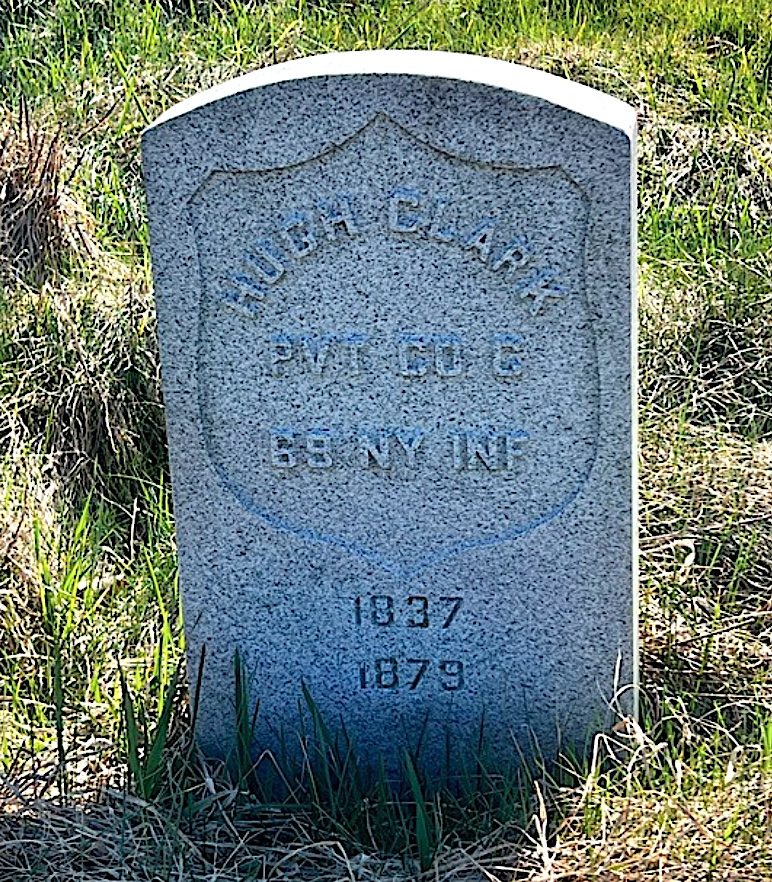
CLARK, JOHN DeWITT (1843-1919). Private, 19th New York Cavalry, Company B. Born in Birdville, New York, Clark was a 19-year-old farmer who was 5′ 6½” with a light complexion, blue eyes and brown hair. He enlisted as a private in Company B, 19th New York Cavalry (also known as the 130th New York Infantry and the 1st New York Dragoons), on July 31, 1862, in Dansville, New York, and mustered in at Portage, New York, on August 11. His records list him as insane as of November 1863, and indicate he was sent to Lincoln General Hospital in Washington, D.C., on March 25, 1864, and to the Government Insane Asylum, (also called St. Elizabeth’s), in Washington, D.C., on April 7. Clark was discharged from the hospital for disability on October 19, 1864. He applied for and received an invalid pension, certificate 507,956. He last resided at 745 Classon Avenue in Brooklyn. Clark died from heart disease. Section 171, lot 26150, grave 94.
CLARK, MAURICE (or MORRIS) J. (1842-1874). Sergeant, 40th New York Infantry, Companies A and F; Veteran Reserve Corps. Originally from Scotland, Clark enlisted as a private on June 21, 1861, at Yonkers, New York, and mustered into Company A of the 40th New York that day. The muster rolls indicate that he deserted from Camp Runyon on July 1, 1861, and that he was dropped from the rolls, but he apparently returned at some point or the desertion was listed in error. On May 25 when Company A was disbanded and the enlisted men were transferred to other companies within the regiment, he was transferred to Company F with the rank of sergeant. He was wounded in action on July 2, 1863, at the Battle of Gettysburg, Pennsylvania. On November 16, 1863, he was transferred into the Veteran Reserve Corps with the rank of sergeant. His last residence was 17 Ridge Street in Manhattan. Section 17, lot 17245, grave 136.

CLARK, NATHAN (1826-1895). Private, 7th Regiment, New York State Militia, Company A. Clark, a native New Yorker, was born in his parents’ house at Varick and Canal Streets. According to the 1860 census, he worked in the confectionery trade but as indicated by his obituary in The New York Times, he was also a well-known restaurateur dating from 1845. A member of the 7th Regiment beginning in the 1850s, he served in that regiment during the Civil War for 30 days in 1861.
He returned to his confection and restaurant business as stated in the census of 1870 and had a personal worth of $60,000. When he applied for a passport in 1873, he described himself as 5’7″ tall with light eyes, high forehead, dark hair and light complexion. The census for 1880 indicates that he worked in a restaurant at that time. Active in the community, he was a member of the New York Produce Exchange and the Real Estate Exchange. Clark was a member of Lafayette Post #140 of the G.A.R. as of March 1894, the Seventh Regiment Veteran Association, the old Uniformed Veteran Battalion, and the Reform Club of New York.
According to his obituary, he had extensive real estate holdings in New York City and was an advocate for tariff reform whose letters on that subject were published in Kansas newspapers during the 1892 Presidential election. As per a newspaper article about his funeral, members of the 7th Regiment Veteran Association and Lafayette Post of the G.A.R. attended the service in civilian clothes. He last lived at 318 West 82nd Street in Manhattan. His death was caused by apoplexy. Section 161, lot 13117, grave 10.
CLARK, ROBERT BRUCE (1824-1896). Colonel, 13th Regiment, New York State National Guard. A real estate broker and civil engineer, Robert Bruce Clark was born on Sands Street in Brooklyn. He enlisted at Brooklyn as lieutenant colonel on April 23, 1861. He was commissioned into the Field and Staff of the 13th New York State Militia on May 13, took over at Baltimore, Maryland, and mustered out on August 6 at Brooklyn. On May 28, 1862, he was again commissioned into the 13th, then part of the National Guard, was promoted to colonel that day, and mustered out three months later on September 12. In 1887, he applied for and was granted an invalid pension under certificate 385,416. A member of the Society of Old Brooklynites, Colonel Clark died from gastroenteritis on March 9, 1896, the same day as the funeral of General John B. Woodward, his commander in the 13th Regiment. He last lived in Brooklyn. His widow, Evangeline Clark, applied for and received a pension, certificate 738,184. Section 61, lot 747.
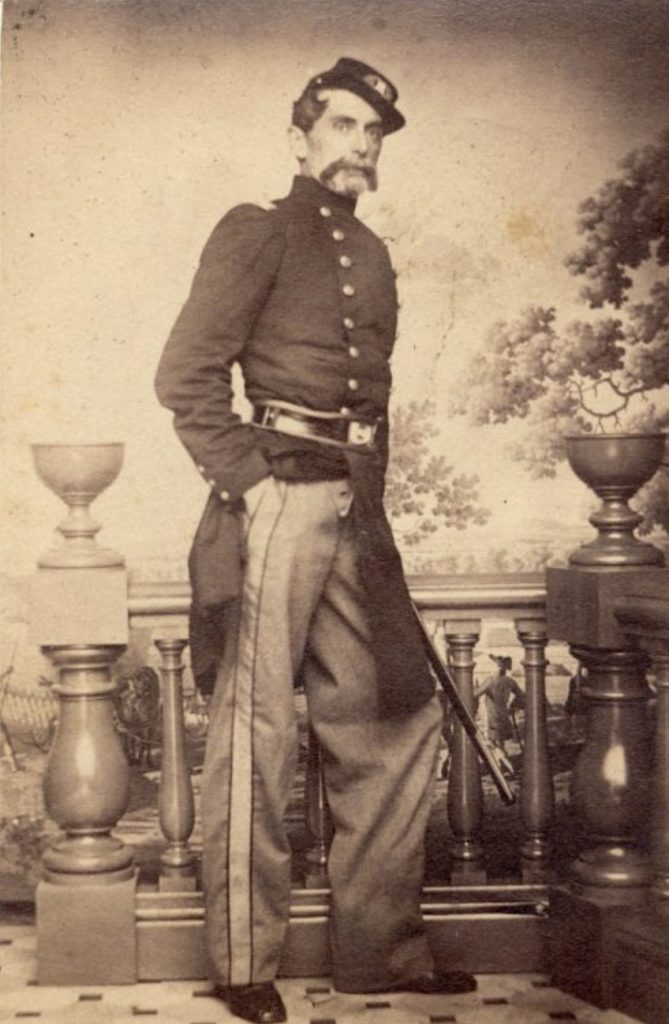
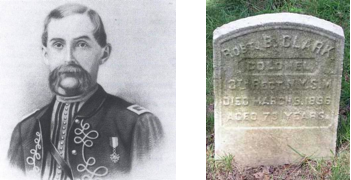
CLARK, WILLIAM H. (1834-1863). Seaman, United States Navy. Born in New York City and a resident of 113 Lawrence Street in Brooklyn, he was a teacher before the Civil War. He enlisted in the Navy, and was killed on board the USS Keystone State, a wooden side-wheel steamer, in Charleston Harbor, South Carolina, when that ship was attacked on January 31, 1863, by two Confederate ironclads. Section 69, lot 11554.
CLARKE, BEVERLY RANDOLPH (1836-1889). Third lieutenant, United States Revenue Marines; private, 71st Regiment, New York State Militia, Company F. Clarke, who was born in Florida, first served in 1861 for a three-month deployment as a member of Company F of the 71st New York State Militia. He was appointed a third lieutenant in the Revenue Marine Service on March 7, 1865. His commission was revoked on July 19, 1870. His last residence was at 239 East 103rd Street in Manhattan. Clarke died from a cerebral hemorrhage. Section 15, lot 17263, grave 1450.
CLARKE, RICHARD J. (1838-1872). First lieutenant, 12th New York Infantry, Company C. Originally from Ireland, Clarke enlisted on November 1, 1861, at New York City, as a first lieutenant. After being commissioned into the 12th Infantry on January 8, 1862, he was discharged on June 20, 1863. His last residence was in Oil City, Pennsylvania. His death was attributed to kidney disease. Section 162, lot 15438.
CLARKSON, ANDREW (1843-1914). Private, 66th New York Infantry, Company I. Clarkson was born in Scotland. After enlisting as a private at New York City on December 8, 1861, he mustered into Company I of the 66th New York that same day, and mustered out on December 8, 1864, at Petersburg, Virginia. In 1891, his application for an invalid pension was approved, certificate 1,063,787. His last residence was 1697 Third Avenue in Manhattan. Clarkson died of nephritis at Metropolitan Hospital in Manhattan. Section 128, lot 31394, grave 617.
CLARKSON, ISAAC F. (1832-1874). Private, 37th Regiment, New York State National Guard, Company G. A native of New Jersey, Clarkson enlisted at New York City as a private on May 29, 1862, and mustered out there at the expiration of his enlistment three months later on September 2. He last lived at 91 Attorney Street in New York City. His cause of death was pneumonia. Section 17, lot 17245, grave 1659.
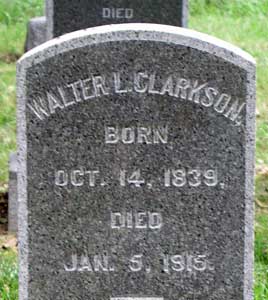
CLARKSON, WALTER LIVINGSTON (or M.) (1839-1915). Private, 82nd New York Infantry, Company I. A native of Saugerties, New York, he enlisted at New York City on March 4, 1862, mustered into the 82nd that day, and was discharged for disability on October 1 at Fort Monroe, Virginia.
According to the censuses of 1870 and 1880, he was a lawyer. Clarkson is listed as a lawyer in the New York City Directories for 1875-1876 and 1877 and the Phillips” Business Directory for 1881-1882; his firm was then located at 85 Nassau Street. As per the New York City Directories for 1882-1883, 1885-1886 and 1891-1892, he was a lawyer whose practice was at 149 Broadway. At the time he applied for a passport in 1892, he was 5′ 11½”tall with a long face, prominent chin, black eyes, dark hair and dark complexion. The census for 1900 indicates that he was still practicing law. His last residence was in Oyster Bay, Long Island. He died from an acute intestinal obstruction. Section 82, lot 25263.
CLASBACK (or CLASSBACK), DANIEL (1831-1878). Private, 11th New York Infantry, Company I. Clasback, who was born in New York, was a sail-maker according to the 1850 census and an awning-maker at the time he enlisted as stated in the Draft Registration Record. After enlisting as a private at New York City on April 20, 1861, he mustered into the 11th New York on May 7. He was discharged for disability on December 27, 1861. Clasback applied for a pension on March 18, 1863, certificate 72,164. His last address was 357 West 27th Street in Manhattan. He died from Bright’s disease. Section F, lot 19775.
CLAY, JR., JOHN (1842-1916). Hospital steward, United States Army. Born in New York City, Clay was a druggist who was 5′ 3″ tall with grey eyes, light hair, high forehead and a fair complexion. He enlisted as a hospital steward in the United States Army on December 24, 1862, and was discharged on September 11, 1865, at Philadelphia, Pennsylvania. According to the 1880 census, he was employed as a druggist. In his later years, he worked as a chemist for Merck. In 1907, he applied for an invalid pension that was granted, certificate 1,140,249. His last address was 17 South Clinton Street in East Orange, New Jersey. Matilda Clay, who is interred with him, received a widow’s pension in 1916, certificate 810,740. Section 138, lot 28565, grave 1.

CLAYPOOLE, JOHN J. (1825-1899). Private, 11th New York Cavalry, Company A. Originally from New Jersey and a carpenter by trade, he was 5′ 5″ tall with black eyes, black hair and a fair complexion according to his description on the muster rolls. Enlisting on February 2, 1862, he mustered in on that date. On September 15, 1862, he was discharged for disability. His pension record shows that he also served in Company C of the 158th New York. He applied for and was granted an invalid pension in 1880, certificate 716,245. The Veterans Schedule of 1890 confirms his military service. He last lived at Parrott Place and 88th Street in Brooklyn. His death was attributed to apoplexy. Mary A. Claypoole applied for a widow’s pension in 1901, application 734,098. Section 135, lot 30010, grave 538.
CLAYTON, JR., WILLIAM HENRY (1814-1907). Unknown rank, 8th Regiment, New York State National Guard. Clayton was born in New York City. As per the Brooklyn Directory for 1857-1862, he was a printer. According to his obituary in the Brooklyn Daily Eagle, he enlisted in the 8th New York National Guard, also known as the Washington Grays, as an officer. Both his rank and company are unknown. He was in command of the Washington Grays during the New York City Draft Riots in July 1863. According to Draft Registration Records for 1863, he was employed as a printer at the time of his service.
After the war, he was a printer’s joiner as indicated by the censuses of 1870 and 1880 and the Brooklyn Directory for 1888-90. (A joiner makes the cases, furniture and metal or wood strips needed for the trade.) He also was a foreman in the New York City Volunteer Fire Department, Engine Company 9, and a Freemason. His last residence, which he built, was 257 Chester Street in Brooklyn. Section 180, lot 13553, graves 1-6.
CLEARWATER, WILLIAM (1835-1871). Private, 158th New York Infantry, Company I. At the time of the census of 1850, Clearwater lived with his parents in Bloomfield, New Jersey. According to the censuses of 1850 and 1860 and the muster rolls, Clearwater was a grinder, a knife and scissor sharpener, by trade. He was 5′ 8″ tall with blue eyes, brown hair and a light complexion. After enlisting at Brooklyn on August 20, 1862, he mustered into the 158th New York as a private on September 2. The muster rolls show that he was absent and sick in the hospital in October 1864 and returned to his regiment that December. He mustered out with his company on June 30, 1865, at Richmond, Virginia.
Clearwater returned to his trade after the war as affirmed by the census of 1870. His last residence was 216 York Street, Brooklyn. Elizabeth Clearwater, who is interred with him, applied for and received a widow’s pension in 1891, certificate 365,220. He was also survived by their two children. Section 154, lot 22693, grave 986.
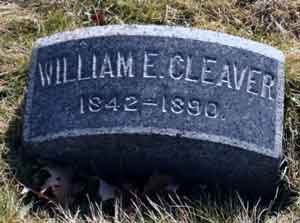
CLEAVER, WILLIAM E. (1842-1890). Private, 5th Delaware Infantry, Company H. Cleaver, who was born in Delaware, served as a private in the 5th Delaware. Further details are unknown. In 1890, he applied for an invalid pension, application 1,024,152, but the certificate number is not stated. The 1890-1892 Brooklyn Directory lists him as a broker at 62 Liberty Street in Manhattan. His last residence was 125 Berkeley Place in Brooklyn. He died from tuberculosis. Henrietta Cleaver, who is interred with him, applied for a widow’s pension, application 478,042, but there is no evidence that it was certified. Section 195, lot 27268.
CLEMENT, NATHANIEL HOLMES (1844-1899). Corporal, 7th Rhode Island Cavalry, Company B. A native of Tilton, New Hampshire, his ancestors on both sides of his family were among the early settlers of Massachusetts Bay Colony. His father, Zenas Clement, was active in political life as a Democrat and was a close friend of President Franklin Pierce. As per Nathaniel Clement’s biographical sketch in a remembrance published by Dartmouth College, his father was appointed Collector of Customs at Portsmouth, New Hampshire, by Pierce in 1853 and held that office until Abraham Lincoln’s election. Nathaniel Clement was educated at a well-regarded high school in Portsmouth where he pursued a classical education, was top of his class and graduated at the age of fifteen in 1859, entering Dartmouth later that same year. He was described as short in stature with rosy cheeks and pleasant to look at. His biography notes that he was an outstanding student, especially in Greek and was second in his graduating class, though his education was interrupted by his military service. That biography notes that he was among the first in his class to enlist and that he excelled in learning military tactics and horsemanship at the same level as his excellence in academics.
During the Civil War, Clement enlisted as a private at Providence, Rhode Island, on June 24, 1862. At that time, he resided in Concord, New Hampshire, and was a student at Dartmouth College. He mustered into the 7th Squadron, 7th Rhode Island Cavalry on July 3. The company, also called the Dartmouth Company of Cavalry or the Norwich Cavalry, was composed of men from Dartmouth and other nearby colleges who offered their services to the governors of New Hampshire, Maine and Massachusetts. Governor Sprague of Rhode Island gave his approval for their service in a Rhode Island regiment and greeted them with a sumptuous repast. They were at Harpers Ferry (now West Virginia) and at the Battle of Antietam, Maryland. At some point, Clement was promoted to corporal before he mustered out after three months on October 2 at Providence, Rhode Island.
Clement graduated from Dartmouth in 1863, but missed partaking in the commencement ceremony after suffering from typhoid fever a few weeks before the event. He soon took an appointment to a clerkship in the Treasury Department in Washington, D.C., remaining there while studying law and was admitted to the bar in 1866. He then set up a practice in Brooklyn with Crooke, Bergen & Pratt. He was elected trustee of the Brooklyn Law Library in 1880 and remained in that position until his death. A Democrat, he became a judge of the City Court in Brooklyn in 1882, then, in 1887, became chief judge. He was elected justice of the Supreme Court in 1894 but declined to seek renomination in 1896, citing his opposition to William Jennings Bryan’s position on Free Silver. A member of the Mansfield Post #35 of the G.A.R, Clement mustered into that organization on December 19, 1882 and listed his occupation as lawyer in its sketchbook. He was also active in civic, political and educational affairs. His obituary in the New York Evening Post, which confirms his Civil War service, notes that he was a member of the Brooklyn Club, the Marine and Field Club, the Crescent Athletic Club, and the Carlton Club. His last residence was 156 Sixth Avenue in Brooklyn. He died from nephritis and heart issues. Clement was survived by his widow, Catherine Amelia Piper Clement and two children; two other children predeceased him, one an infant and one a toddler.
As per his biographical sketch, his funeral was held at St. John’s Episcopal Church on St. John’s Place and Seventh Avenue. That service attracted over a thousand people including many judges, lawyers and other prominent citizens. After his death, he was honored by the Brooklyn Bar Association by a ceremony during which his classmates and associates eulogized his accomplishments. One fellow judge said of him, “Judge Clement was a man of many activities. He was a student, soldier, lawyer, judge, club man, financier, administrator of charities, worker in libraries, citizen, partisan and politician.…” The speaker went on to praise his modesty, sincerity and leadership skills. Clement was also saluted by fellow judges for his impartial decision-making, attention to detail, for always being a student of the law, and for being a hero of public service. Section 46, lot 22150, graves 7 and 8.
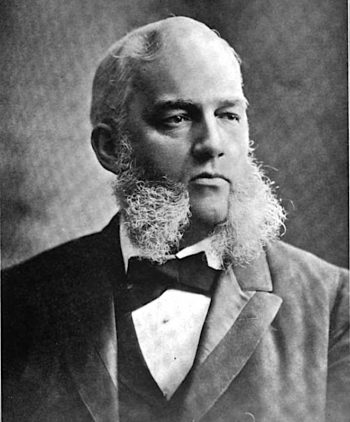
CLEMENTS, JOHN (1822-1869). Second lieutenant, 83rd New York Infantry, Company H. A printer, born in New York, Clements enlisted and mustered into Company H of the 83rd New York Infantry at New York City on May 27, 1861, as a sergeant. He was promoted to second lieutenant on October 3, 1861. In March 1862, he was on brigade train guard detail. Clements was hospitalized in September at Frederick, Maryland, suffering from ulceration of the left eye, and was discharged for disability at Berlin, Maryland, on November 1, 1862. After the War, he became increasingly disabled and only worked at odd jobs. He last resided at 96 Varick Street, New York City. In 1886, his widow, Margaret M. Clements, who is interred with him, was denied a pension, on the grounds that Clements’ death from erysipelas was not service-related. She appealed, and was granted a pension by Congress in 1890, certificate 276,885. Section 1, lot 6527.
CLIFT, EMORY WHITE (1833-1886). Captain, 13th Infantry, United States Army, Company G. Born in Skaneateles, New York, Clift enlisted as a first lieutenant on May 14, 1861, and was immediately commissioned into the 13th Infantry of the United States Army. He was promoted to quartermaster on September 1, 1861, and to captain on September 20, 1864. A career Army officer, he continued serving in the U.S. Army until October 16, 1884, and was stationed in many parts of the country. In 1867, Clift served at Fort Columbus in New York Harbor.
The 1870 census indicates that Clift was living in Diamond City, Montana Territory; the 1880 census reports that he was living in Mobile, Alabama. At the time of his death on April 30, 1886, he lived in Detroit, Michigan. He died from cerebral congestion (insufficient blood flow to the brain). Florence Clift applied for and received a widow’s pension in 1887, certificate 240,724. Clift was interred at Green-Wood on November 10, 1888. Section 93, lot 36.
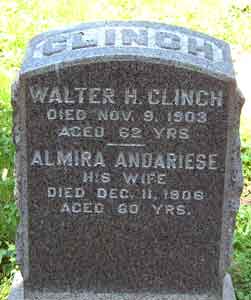
CLINCH, WALTER H. (1841-1903). Private, 22nd Regiment, New York State National Guard, Company F. A native New Yorker and a clerk at the time of his enlistment, he served for 30 days in the 22nd New York National Guard in 1863. According to the censuses of 1870 and 1880, he worked as a clerk; the Brooklyn Directories for 1875-1876 and 1876-1878 also note that he was employed as a clerk. The Brooklyn Directory for 1888-1890 states that he was employed as a printer Brooklyn Directory for 1890-1892 indicates that he was a clerk. He last lived at 95 Utica Avenue in Brooklyn. He died from apoplexy. Section 76, lot 2657, grave 11.
CLINE, HUGH H. (1837-1898). Second assistant engineer, United States Navy. Born in Baltimore, Maryland, Cline had an extensive naval record serving first as a third assistant engineer as of July 1, 1861, and assigned to the USS Wyoming on August 11. He was promoted to second assistant engineer on December 18, 1862, and detached to the USS Dictator on July 7, 1865. He was then aboard the USS Pensacola on October 25, became a first assistant engineer on January 1, 1868, and was detached to the Miantonomoh on November 6, 1869. Cline served on many vessels among them the Terror, Canandaigua, Hartford, Saco, Passaic, Montauk, Alarm, Swatara, and Mohican. He is listed as being in the United States Navy in the Brooklyn Directory for 1873-1876 and as being an engineer in the Brooklyn Directory for 1880-1882; the latter directory notes that he lived at 770 Lafayette Avenue. On December 2, 1887, he became chief engineer, and served in that position aboard the Franklin, Atlanta, and Charleston before he retired on August 27, 1894. Cline received a medical discharge from the Navy.
In his report of July 26, 1894, R. W. Meade noted that Cline suffered an attack of “hysteria” while on board the Mohican in July 1885 at which time he had a headache and partial paralysis of the right hand and arm resulting in time off from duty for a week. In October 1893, onboard the Charleston, he suffered from vertigo for four days and then, while on the Charleston in May 1894, he was placed on the sick list with “neurasthenia,” a term no longer in scientific use, describing a condition of the nervous system that affected memory, and caused nervousness, and despondency. On June 4, he was declared “unfit for duty.” His last residence was 634 Greene Avenue in Brooklyn. He died after an operation for cancer of the tongue at Long Island College Hospital in Brooklyn. Leonora Cline, who is interred with him, received a widow’s pension of $30 a month from the Navy in 1898, certificate 13,078. The pension document states that Cline retired as a chief engineer with relative rank of lieutenant commander. Section 63, lot 7411, grave 1.
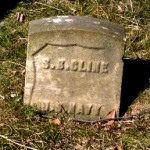
CLINE, SIDNEY B. (1850-1901). Acting ensign, United States Navy. Listed as a mate on June 13, 1863, Cline, who was born in New York, became an acting ensign on March 7, 1865, and was honorably discharged on July 5. He returned to service as a mate on December 19, 1865, but his appointment was revoked on January 2, 1866. According to the New York City Directories of 1879 and 1882-1883, he was employed as a clerk. In 1900, the census shows that he was a press agent. Cline last lived at 56 East 106th Street in New York City. He died from tuberculosis. Section 76, lot 7142, grave 3.
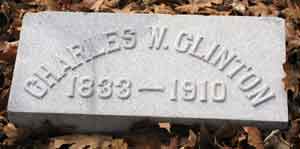
CLINTON, CHARLES WILLIAM (1838-1910). Corporal, 7th Regiment, New York State National Guard, Company K. A New York City native, his father was a physician and his great grandfather was General James Clinton, who fought for the patriots during the American Revolution. Charles began his career as an architect in 1858 after studying in the office of Richard Upjohn, the architect of Trinity Church in Manhattan and Green-Wood’s Main Gates. During the Civil War, Charles Clinton enlisted at New York City as a corporal on May 25, 1862, mustered into the 7th Regiment on that same date, and mustered out with his company three months later on September 5 at New York City.
After returning to his profession, his most famous commission was the design of the privately funded and ornate Seventh Regiment Armory on Park Avenue in 1880, the same regiment in which he served. That magnificent building still stands—and, due to substantial restoration work, is in excellent condition. It was designated a New York City landmark in 1967 and a National Historic Landmark in 1986. Among Clinton’s other commissions include the city headquarters of the New York Athletic Club on Sixth Avenue and West 55th Street (1886) and a cluster of four skyscrapers on Wall Street including the Bank of America Building, the Merchants’ National Bank, the nine-story Central Trust Company of New York and the 10-story Wilks Building. He also was commissioned to design new headquarters for the Imperial Fire & Life Insurance Company in Montreal, Canada ((1888).
He became a partner in the firm of Clinton and Russell in 1894. That firm, which remained in existence until 1940, designed the Astor Hotel, an anchor of Times Square, the Apthorp, an historic apartment building on Broadway and West 78th Street (also funded by Astor), the world’s largest office building of the time, and other skyscrapers for banking and insurance companies on Wall Street. As per his obituary in the New York Evening Post, their firm also designed the Hudson Terminal buildings, the Broad Exchange, Exchange Court, Wall Exchange, and the 71st Regiment Armory. A member of the American Institute of Architects, he was at one time its vice president; at the time of his death, he was the oldest member of that association.
Clinton’s obituary notes that he belonged to the Chamber of Commerce, the Architectural League, the Municipal Art Society and the Seventh Regiment. In addition, he was a member of the Tuxedo, Riding, New York Yacht and Century Clubs. His last address was 39 East 57th Street in Manhattan. Clinton’s cause of death was paresis (paralysis). His widow, Emily de S. Gorsuch Clinton and their two children survived him. Section 188, lot 3356.
CLIREHUGH, WILLIAM SCOTT (1825-1897). First lieutenant, 13th Regiment, New York State National Guard, Company F. Born in Scotland, he enlisted on May 28, 1862, at Brooklyn, was commissioned into Company F on the same day, and mustered out at Brooklyn on September 12, 1862. He is likely the William S. Clirehugh who is listed as a wigmaker in the Brooklyn Directories for 1857-1862, 1864, 1865, 1866, 1873-1876 and 1876-1878. That same man is listed as an insurance agent in the Brooklyn Directory for 1880-1882; in the directories after 1873, he lived at 100 3rd Place. He last resided at 116 Lawrence Street in Brooklyn. His death was a suicide. Section 15, lot 7859, grave 8.
CLITZ, JOHN P. (1848-1888). Mate, United States Navy. Born in Georgetown, D.C., and the son of a rear admiral, John Mellen Brady Clitz, he was educated in the public schools. He served during the Civil War as a mate on the following warships: Penobscot, Juniata, Santiago de Cuba, and Powhattan. He spent time in Ceylon (now Sri Lanka) immediately after the hostilities.
As per his obituary in the Brooklyn Daily Eagle, which confirmed his military service, he was single and worked during the last year of his life for Wechsler & Abraham, a department store that later was known as Abraham and Straus (A & S). He last lived at the home of his father at 434 Gates Avenue in Brooklyn. His death was attributed to meningitis, an illness that afflicted him for one week. Section 165, lot 26058, grave 6.
CLOSE, HENRY (1824-1891). Second lieutenant, 84th Regiment, New York State National Guard, Company K. A New Yorker by birth, Close was a spar maker (construction carpenter) according to the censuses of 1850, 1860, and the muster rolls. Serving for 30 days in 1863, he enlisted at New York City as a second lieutenant on July 3, was commissioned in that day, and mustered out at New York City on August 4.
The 1870 census states his occupation as superintendent. As per the New York City Directories for 1876-1876, 1876-1878, the 1880 census and the New York City Directories for 1882-1883, 1884-1886, 1888-1889, and 1890-1892, he was a spar maker. According to his obituary in the Brooklyn Daily Eagle, he was a Boss Tweed henchman and the foreman of American Engine Company No. 6. When the Fire Department of New York City became a paid force (before that it was a volunteer department), Close was appointed superintendent of the repair shops. He was active in politics in the Seventh Ward where Boss Tweed rose to power. In community life, he belonged to the associations of volunteer and exempt firemen and spar makers. The 1890 Veterans Schedule confirms his military service. Close last lived in Brooklyn at 220 South 2nd Street. His death was attributed to pneumonia. Section 86, lot 2205, grave 19.
CLOWES, THEODORE FREDERICK (1839-1914). Musician, 7th Regiment, New York State Militia, Company C; private, 1st Regiment, New York State National Guard, Company C. Clowes, who was born in New York City, was a bank clerk when he enlisted there as a musician on April 19, 1861. He served for 30 days with the 7th Regiment, New York State Militia, mustering out as a private. A year later, he served for three months with the 1st Regiment’s National Guard.
In civilian life, he worked at the Bowery Savings Bank in Brooklyn from 1861 until his death when he was the oldest employee of the bank and rose to the position of paying teller. Clowes is listed as a teller in the Brooklyn Directory for 1873-1876 and as a clerk in the Brooklyn Directory for 1890-1892; in both directories, his home address is listed as 1385 Pacific Street, the same address where he last lived. His obituary in the Brooklyn Daily Eagle confirms his Civil War service. He died at his summer residence in Bridgehampton. His death was attributed to heart disease. As per his obituary in the New York Herald, funeral services were held in Bridgehampton. He was survived by two sons and a daughter; six children predeceased him, five as infants and one as a teenager. His wife, Louise Woodruff Clowes, who is interred with him, died in 1913. Section 9, lot 5287.
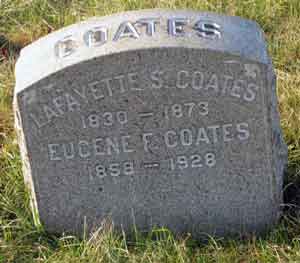
COATES (or COURTS), FAYETTE S. (1830-1873). Private, 1st New York Cavalry, Company B. Coates, who was born in Connecticut, was known as Fayette Courts on the muster rolls. The New York City Directory shows that he was employed in the sewing machine business in 1857 at 345 Broadway. He enlisted as a private on August 25, 1861, the same date that he mustered into the 1st New York Cavalry. As per the muster rolls, he was listed as absent and sick in February and March 1862. He deserted on May 15, 1862, at Pamunkey, Virginia, and returned on August 27, 1863, paying expenses of $10 for his arrest. He deserted a second time and paid $30 for his arrest on or about March 15, 1864, and mustered out on July 18, 1864, at New York City.
According to the census of 1870, Coates was employed as a machinist. He last lived at 201 East 63rd Street, New York City, where he died from a skull fracture and broken neck. News articles the next day attributed his death to an accidental fall after he leaned against the defective railing outside a building on East 63rd Street where he was smoking a pipe. His wife, Sarah J. Coates, applied for a widow’s pension in 1891, application 524,841, but there is no indication that it was certified. Section 17, lot 17245, grave 765.
COBANKS (or COWBANKS), WILLIAM H. (1842-1896). Drummer, 71st Regiment, New York State Militia, Company C. Born in New York, Cobanks enlisted as a drummer in the 71st Regiment on April 19, 1861, and, after serving three months, was discharged on July 30. The New York City Directories for 1875-1876 and 1877-1878 list him as an engineer; in the latter directory, he was living in New Jersey. According to the census of 1880, he was a mechanical engineer living in Jersey City, New Jersey. The Jersey City Directory for 1889-1890 confirms his occupation as engineer. Cobanks’s military service is validated by the Veterans Schedule of 1890. The New York City Directory for 1891-1892 lists him as working in iron and still residing in New Jersey.
As per his obituary in The New York Herald, Cobanks belonged to the William G. Mitchell Post #559 of the G.A.R., the Royal Arcanum and the Hudson Council, National Union; members of those associations were invited to attend his funeral. He last resided at 61 Kensington Avenue in Jersey City. His death was attributed to nephritis. Marietta Cobanks, who is interred with him, applied for a widow’s pension in 1913, application 1,017,259, but she died before it was certified. Section 145, lot 28233, graves 7 and 8.

COBB, HENRY H. (1840-1864). Private, 127th New York Infantry, Company C; Veteran Reserve Corps. After enlisting on August 20, 1862, and mustering in on September 8, he remained with his regiment until January 15, 1864, when he was transferred to the Veteran Reserve Corps. He died of consumption at his home in Orange, New Jersey, on May 26, 1864, and was the first member of his regiment to be buried at Green-Wood. His mother, Tryphena A. Cobb, received a pension on behalf of her son, certificate 334,158. Section 119, lot 8549.
COBB (or COBBS), JACOB LEVI (or LEVY) (1849-1906). Private, 58th Virginia Regiment, Company C, Confederate States of America. A native of Lynchburg, Virginia, the 1850 census reports that he lived in Appomattox, Virginia, with his parents and older brother, James Anderson Cobb (see). The 1860 census notes that the family, now with three children, lived in Lynchburg; the family surname is spelled “Cobbs” on both the 1850 and 1860 censuses and Jacob is listed as Levi in 1850 and Levy in 1860.
During the Civil War, he served in the 58th Virginia, Confederate States of America. That regiment was recruited in Bedford, Franklin, and Amherst Counties in Virginia; Lynchburg, where he lived with his family, is in Bedford County. According to a descendant, he was only 17 when he was captured and taken as a prisoner. According to the record of Confederates who were captured and held as prisoners of war at Point Lookout, Maryland, a J.L. Cobb of the 58th was captured at Petersburg on April 2, 1865 (where the Army of the Potomac finally had that day broken Confederate General Robert E. Lee’s lines), and arrived at City Point, Virginia, two days later. The Baltimore Sun reported that prisoners were transported from Fredericksburg to Point Lookout, Maryland, on transport boats; conditions at Point Lookout were reported to be insufficient and tents were sent there to house the newly captured. He was released on June 20, 1865, upon taking the Oath of Allegiance to the United States. At that time, he was 5′ 9¾” tall with blue eyes, brown hair and a fair complexion. Records in the National Archives confirm that a J.L. Cobbs of the 58th was a prisoner of war; his name also appears on the records of Confederate States of America Prisoners of War.
On August 3, 1868, Cobb married Annie Broderick in Brooklyn. The 1870 census, which incorrectly lists a New York birthplace for Cobb, indicates that he was a brick mason living in Brooklyn. As per the census of 1880, he was married with children and living at 126 Steuben Place in Brooklyn, working as a brick layer. The Brooklyn Directories for 1888 and 1889 list him as a mason; these directories, like all of the censuses, refer to him as Levi (or Levy) Cobb. At the time of the census of 1900 and the 1902 and 1905 New York State censuses, he was widowed, still working as a mason and living at a house that he owned at 316 Watkins Street in Brooklyn. His death certificate, which uses the name Jacob L. Cobb, reports that he died in Brooklyn. He is buried with his wife, who died in 1899, and daughter, Mary Annie, who died in 1881, at age 13. According to his will, filed in Kings County, his personal property was valued at approximately $700. Section 141, lot 23633, grave 1.
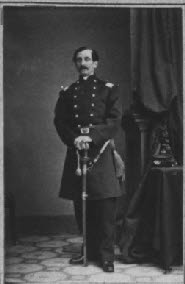
COBB (or COBBS), JAMES ANDERSON (1846-1910). Private, Lynchburg Light Artillery, Confederate States of America. Cobb enlisted at Lynchburg, Virginia, on May 10, 1861, in a regiment that was known variously as Captain Shoemaker’s and Captain Moorman’s Battery, the Virginia Horse Artillery, Beauregard Rifles, and the Lynchburg Beauregards. The regiment was organized on May 10, 1861. It served as Company B in Saunder’s Battalion of Field Artillery and in Pelham’s, Beckham’s and Breathed’s Battalion Stuart Horse Artillery, which were composed of independent companies. After Captain John H. Thompson’s Company of the Virginia Light Artillery was disbanded, some of the men were assigned to the company (Shoemaker’s), as per S.O. 209, dated October 4, 1864. Cobb fought in many Virginia battles including Malvern Hill, Culpepper Courthouse, Fleetwood Hill, Hagerstown, Wilderness, Woodstock and Five Forks. Though his military records indicate that he deserted on January 1, 1865, he was in fact hospitalized for sunstroke at Post Hospital in Augusta, Georgia, on July 9, 1865, and was returned to duty on July 15.
After the war, he moved to New York City and worked as a bricklayer. Married twice, he fathered 14 children. He is the brother of Jacob Levi Cobb (see). He last lived at 217 East 101st Street in Manhattan. He died from cellulitis. Section 128, lot 12807.
COBY, EDWARD PARKE (or E. PARKE) (1844-1904). Private, 47th Regiment, New York State National Guard, Company A. Coby’s ancestors came to New York from The Netherlands and settled in Rensselaer County. According to the G.A.R. Sketchbook and the Green-Wood cemetery database, he was born in Troy, New York. As per his obituary in the Brooklyn Daily Eagle, Stephen Coby, Edward’s father, was a well-known builder and contractor in Troy, New York; that obituary also notes that the Coby family was related by marriage to two prominent New York State families: the Lansings and Schuylers. An only child, Edward Coby, beginning in 1858, was a printer’s apprentice at the New York Sun, and worked there for eight years. During the Civil War, Coby enlisted on June 17, 1863, and mustered into Company A of the 47th Regiment for its 30 day activation.
In 1866, Coby began his own printing business at the corner of Gold and John Streets in Manhattan. Subsequently, his plant was at 19-21 Platt Street. The New York City Directory for 1876-1878 lists him as a printer at 95 William Street; during those years, he lived at 337 East 59th Street. Remaining active in military affairs, he mustered into Abel Smith Post #435 of the G.A.R. on January 11, 1884; he indicated that he was a printer who lived in Brooklyn. In addition, he was a Freemason and member of the Hanover Club and his trade organization of master printers, the Typothetae Association of Manhattan. The Inland Printer (Volume 24, 1900) noted that Coby arranged speakers and headed banquet committees for the latter organization. As per the American Printer and Lithographer, (Volume 32), he was a delegate from New York to the United Typothetae Convention of 1901 at Buffalo, New York. A widower, he last lived at 22 West 30th Street in Manhattan. His death was attributed to cancer. His remains were moved to their present location on March 25, 1906. Coby’s funeral was held at the Christ Church on Bedford Avenue, of which he was a member. Section 146, lot 25707.
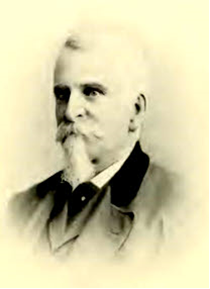
COCHEU, FREDERICK (1832-1897). Captain, 53rd New York Infantry, Company H; 85th New York Infantry, Company H; 61st New York Infantry, Company I. Cocheu, a native of New York City, was self-educated and self-supporting from the age of eight according to his biography in a New York G.A.R. sketchbook. That sketch notes that he enlisted as a private, together with three of his brothers, in April 1861. He then re-enlisted at New York City as a captain on September 24, 1861, and was commissioned into Company H of the 53rd New York, known familiarly as the D’Epineuil Zouaves, on October 17. The regiment was sent to Cape Hatteras, North Carolina, where he was shipwrecked for 48 days on board the John Trucks with 800 men with provisions for only 12 days. After surviving that marooning, he mustered out on March 26, 1862, at Washington, D.C., when his regiment disbanded by order of the War Department.
Cocheu re-enlisted at Albany, New York, later that month on March 29, and immediately mustered into the 85th New York as a captain. His regiment fought in Virginia at Fair Oaks (May 31-June 1, 1862), and at the Seven Days Battle (June 25-July 2, 1862), and at New Berne and Glassboro, North Carolina (December 11-20, 1862). Early in 1863, he was made chief of the ambulance corps and remained in that position until he returned to his company in April. He resigned on July 30, 1863, at Roanoke Island, North Carolina, after his father and brother died.
Subsequently, Cocheu re-enlisted as a captain at Stevensburg, Virginia, on March 25, 1864, was commissioned into the 61st New York on April 4, and fought that spring and summer in Virginia at Corbin’s Bridge, Cold Harbor, and Petersburg. He resigned on September 1, 1864, on account of sickness. The sketchbook notes that he was wounded three times and participated in 34 battles and numerous skirmishes. His pension record indicates additional service in the 5th Independent Battery, New York Light Artillery, but no other information is available related to that service.
After the Civil War, Cocheu was an internal revenue agent. In the 1870s, he represented the Thirteenth and Fourteenth Wards of Brooklyn in the State Legislature. In 1870, he joined the Henry M. Lee Post #21 of the G.A.R. and also belonged to Lafayette Post #140. According to his obituary, he was the commander of Henry Slocum Post #88 and a past commander of Henry Miller Post. A member of the G.A.R. for 26 years, he held leadership positions for 12 terms, was inspector general of the department for one term, and was grand marshal of the 32 Kings County posts in 1885 and at the burial of General Grant. In 1885, his application for an invalid pension was granted, certificate 349,812. The Brooklyn Directory for 1888-1890 shows that he was employed in the insurance business.
His obituary in The New York Times notes that Cocheu lost a considerable fortune in the Grand Street and Newtown Railroad, a venture which he built and then served as its president for some years. His last residence was at 210 South 4th Street in Williamsburg, Brooklyn, a neighborhood where he had lived most of his life. He died from pneumonia. Margaret Cocheu, who is interred with him, applied for and received a widow’s pension in 1897 under certificate 634,756. Section 42, lot 5119.

COCHRAN, ALEXANDER (1820-1908). Surgeon, 56th Regiment, New York State National Guard. Born in County Derry, Ireland, Cochran settled in New York City as a young man and graduated from the College of Physicians and Surgeons. He is listed as a physician in the Brooklyn Directory for 1857-1862. Serving for 30 days in 1863, he enlisted and was commissioned into the 56th New York’s Field and Staff as a surgeon on June 18, and mustered out on July 24.
As per the Brooklyn Directories for 1863, 1864, 1865, 1867-1870, 1870-1873, 1880-1882, 1884-1886 and 1890-1892, Cochran is listed as a physician. According to his obituary in The New York Times, he was a medical inspector for the Brooklyn Board of Health for many years. He was a brother of George Cochran (see). As per an online genealogy, his sister, Mary, noted that he was the only brother who married; Alexander Cochran and his wife had thirteen children. He last lived in Brooklyn at 321 Park Place. His death was caused by nephritis. Section 21, lot 10487.
COCHRAN (or COCHRANE), GEORGE (1830-1872). Brigade surgeon, 2nd Division, New York State National Guard. Born in Ireland, Cochran was educated there at Foyle College and obtained a medical degree from the University of Glasgow, Scotland. After settling in the United States, he obtained another degree from the Medical College of the University of the City of New York, class of 1852; he was a 20-year-old medical student at the time of the 1850 census. His brother, Dr. John Cochran, who died at age 30 in 1857, was a founder of City Hospital of Brooklyn and was a brigade surgeon for the 5th Brigade in Brooklyn. He was also the brother of Alexander Cochran (see). At the time of the 1860 census, he lived with his sister, Mary, and two Irish servants; his real estate was valued at $10,000, and his personal property was valued at $1,000. He is listed as a physician in the Brooklyn Directory for 1857-1862; during those years, he lived at 298 Fulton Street.
During the Civil War, George Cochran was brigade surgeon for the 2nd Division, New York State National Guard which comprised Long Island, Westchester, Putnam, Rockland and Orange Counties. He had the rank of colonel during his service. After the War, he was appointed police surgeon and was subsequently the first health officer of the city Brooklyn. He is listed as a physician in the Brooklyn Directory for 1866. Cochran was also active in politics. As per his obituary in the Brooklyn Daily Eagle, “It may truly be said that he had not an enemy in the world, and that he made a friend of every man that he ever was ever intimately brought in contact with—as an official, physician and a man.”
Cochran last lived at 316 Fulton Street in Brooklyn. His death was attributed to pneumonia. Local newspapers covered the details of his funeral that was held at the home of his brother Alexander Cochran. Hundreds of visitors from all walks of life came to view the body. His remains were enclosed in a black walnut casket covered in black velvet. A cross and a crown and anchor were placed on the casket and the room was perfumed by the many floral tributes. Pall- bearers, who wore broad white scarves, included Mayor Samuel S. Powell, ex-Mayor Martin Kalbfleisch, General Hiram B. Duryea (his commanding officer), and other prominent local leaders. Section 21, lot 10487.
COCHRAN, JAMES A. (1832-1904). Private, 5th New York Infantry, Company H. Cochran was a machinist at the time of his enrollment who was 5′ 8¼” with blue eyes and dark brown hair. He enlisted at New York City on April 25, 1861, and mustered on May 9. He was wounded in the leg at Big Bethel, Virginia, on June 10, 1861, and on his right side in the hip and scalp at Second Bull Run, Virginia, on August 30, 1862. After being hospitalized at Armory Square Hospital in Washington, D.C., and General Hospital in Baltimore, Maryland, he returned to service on March 4, 1863, and mustered out with his company two months later on May 14.
Subsequently, Cochran was a member of the veterans association of the 5th New York. In 1879, his application for an invalid pension was granted, certificate 233,604. According the census of 1880, he was employed as a machinist. He joined the G.A.R., Adam Goss Post #330, in New York City, on March 8, 1887. The Veterans Schedule for 1890 confirms his military service. The census for 1900 indicates that he was working as a store keeper at that time. His last residence was 486 Third Avenue in Brooklyn. Shortly after his death from endocarditis, Mary Cochran applied for and received a widow’s pension, certificate 574,827. Section 128, lot 31394, grave 495.
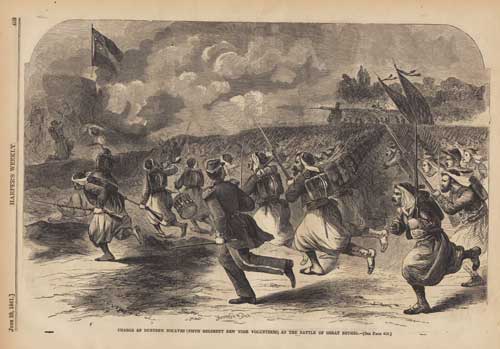
COCHRANE (or COCHRAN), LEWIS ((1843-1906). Corporal, 139th New York Infantry, Company C. Cochrane was born in New York City. After enlisting at Brooklyn as a private on August 22, 1862, he mustered into the 139th New York on September 9, was promoted to corporal on May 1, 1865, and mustered out on June 19, 1865, at Richmond, Virginia.
In civilian life, he was the chief engineer for thirty-five years of the Robert Graves Company, a wallpaper establishment in New York City. This is confirmed by the censuses of 1880 and 1900 which list his occupation as engineer. He was listed as an engineer in the Brooklyn Directory of 1880-1882; at that time, he lived at 857 Atlantic Avenue. Cochrane was awarded an invalid pension in 1896, certificate 932,900. His obituary in the Brooklyn Standard Union confirms his Civil War service and notes that he belonged to the Independent Order of Odd Fellows and the Royal Arcanum, fraternal organizations. His obituary in the Brooklyn Daily Eagle indicates that members of the Royal Arcanum were invited to attend his funeral. At the time of his death, he lived at 521 Dean Street in Brooklyn. His death was attributed to Bright’s disease. He was survived by his son. Section 86, lot 31217, grave 167.
COCKS, JOHN SAMUEL (1813-1863). Colonel, 40th New York Infantry. Born in New York, he had a long and at times, stormy association with the State Militia as a captain in the 1st Company of the 7th Regiment in 1838, then brigade inspector and brigade major for the Third Brigade until 1857. He was also associated with the 12th Regiment, later bestowing the colors on Daniel Butterfield when the 12th marched down Broadway in April 1861. He worked as a wood turner and was elected to the New York State Assembly in 1855. While in the legislature, he was an advocate for amendments to the state’s military code that were adopted. During the Civil War, he enlisted as colonel of the 40th New York Infantry, known as the “Mozart Regiment,” on June 14, 1861, and resigned two weeks later “on account of mutual dissatisfaction between himself and some of his officers.” Colonel Cocks died in Brooklyn in April 1863. Section 157, lot 14387.
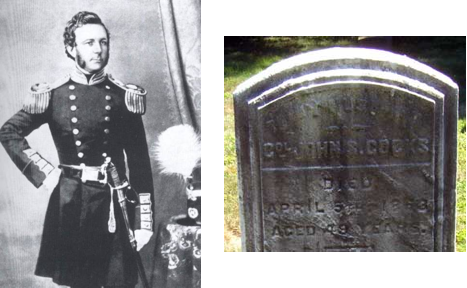
COCKS, WARREN H. (1839-1866). Private, 56th Regiment, New York State National Guard, Company H. A native New Yorker, Cocks served with the 56th National Guard when it was activated for 30 days in 1863. He last lived on 9th Street in Brooklyn. Section 117, lot 1507.
CODDINGTON, REUBEN (or RUBIN) F. (1844-1896). Paymaster steward, United States Navy; private, 23rd Regiment, New York State National Guard, Company C. Coddington first served in Company C of the 23rd New York National Guard in 1863 for 30 days from June 18 through July 22. He then enlisted at New York City on May 2, 1864, served as a paymaster steward in the United States Navy on board the USS Augusta, and was discharged on October 19, 1864. He received a pension from the Navy beginning in 1871, certificate 12,533. According to his death certificate, he was employed as a “mercantile reporter.” Most likely a relative of William Coddington (see), his last address was 611 Nostrand Avenue in Brooklyn. He died from tuberculosis. His wife, Maria Coddington, applied for and received a Navy widow’s pension in 1896, application 660,952. Section 101, lot 2012, grave 14.
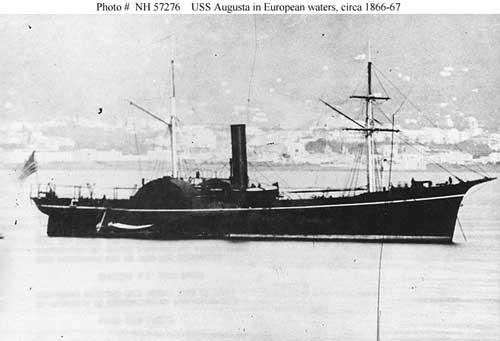
CODDINGTON, WILLIAM H. (1833-1898). Landsman, United States Navy. A native of New York City, he was 5′ 6½” tall with hazel eyes, brown hair and a light complexion. He enlisted on June 21, 1852, first serving as a cabin steward, and served aboard the USS Massachusetts at San Francisco, California, until his discharge on April 17, 1853. He re-enlisted on December 9, 1861, and joined the United States Navy where he served as a seaman on the USS North Carolina, then the USGB Mercedita, and then the USS Princeton, until his discharge on March 5, 1863, at Philadelphia, Pennsylvania. He re-enlisted as a landsman on August 30, 1864, at Jersey City, New Jersey, mustered immediately, served aboard the USS Vermont, the USS New Hampshire, the USS Dai Ching, the USS Harvest Moon and the USS Columbia before he mustered out on June 7, 1865. The Brooklyn Directory for 1866 notes that he was in the United States Navy.
In 1879, he applied for an invalid pension at Newark, New Jersey, citing that he developed rheumatism while on blockade duty at Charleston, South Carolina, and when the Mercedita was attacked by CSS Palmetto on January 31, 1863. At that time, he fell down a hatch, injured his leg, and was later hospitalized in Philadelphia, Pennsylvania, where he was discharged for disability. In his letter requesting a pension, he said that he pretended to be younger than his age at the time of his enlistments, that he ruptured his bowel during his second tour of duty while escaping from the Dai Ching in January 1865, and that he was employed on an irregular basis as a steward on ships in New York Harbor. Although his pension request was initially rejected, he reapplied in 1887. It does not appear that he ever received a pension.
According to his death certificate, Coddington worked at the Custom House. He was a member of the Grand Army of the Republic’s Benjamin F. Middleton Post #500 from July 18, 1885 until his death. Most likely, he was a relative of Reuben Coddington (see). His last residence was 407 Tompkins Avenue in Brooklyn. His death was attributed to apoplexy. In 1898, his widow, Mary Coddington, was awarded a pension from the Navy, certificate 17,632. Section 101, lot 2012, grave 13.

CODET, ALFRED CLARK (1848-1919). Private, 13th Regiment, New York State National Guard, Company E. A native of New York City, Codet enlisted at Brooklyn as a private on May 28, 1862, mustered into the 13th Regiment that day, and mustered out at Brooklyn three months later on September 12. According to the census of 1870, he was a clerk (broker); in 1880, he was employed as a clerk in a store. The Brooklyn Directories for 1890-1892, 1892-1894 and 1896-1898 list him as a broker at 28 Broadway in Manhattan. The 1900 census states that he was a banker and broker. He applied for an invalid pension in 1907, application 1,366,600, but there is no certificate number. In 1910, he was still working in a bank as stated by the census.
A member of the Royal Arcanum, he held the positions of regent and representative to the Grand Council. An article in the Brooklyn Daily Eagle on March 19, 1892, notes that Codet was on the Entertainment Committee for a benefit at Avon Hall held by the Royal Arcanum for a disabled member of that association. He also belonged to the 13th Veterans Association whose members were invited to his funeral.
As per his obituary in the Brooklyn Standard Union, which confirms his Civil war service, he died at the home of his daughter in Hillsdale, New Jersey, while on a visit. His death was attributed to myocarditis (inflammation of the heart muscle). That obituary notes that he was retired and had lived in Brooklyn for nearly sixty years. His funeral took place at the home of his other daughter at 43 Midwood Street in Brooklyn. He was also survived by his widow, Carrie Herwig Codet, and a son. Section 138, lot 26756, grave 5.
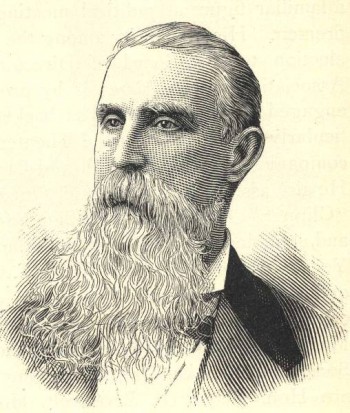
COE, EDWIN (1820-1891). Private, 71st Regiment, New York State Militia, Company G. Born in New City, New York, and the father of Joseph (see), he was a hatter, according to the 1850 census. An advertisement for his shop on the Bowery noted that the establishment offered men a variety of “splendid” hats and caps. He then was a ticket taker at the Academy of Music.
Coe was over 6′ tall and a resident of New York City at the onset of the Civil War. He served in the City’s volunteer fire department with Hose 19 and Hose 9 and was employed by the Board of Education at the time of his enlistment on April 19, 1861. He mustered into service when the 71st was activated on May 3, 1861. Coe fought at Bull Run, Virginia, volunteered to patrol the Potomac on the USS Baltimore, and when his colonel was killed at Alexandria, he assisted in dragging him out of the line of fire, then helped sew his body in the flag. When Coe returned to New York City, he was made color-bearer and held the banner during a local parade.
In civilian life, Coe was an assistant clerk of the Superior Court, a position that he held for 12 years. He is listed as a clerk in the Brooklyn Directories for 1882-1883 and 1891-1892. In addition, he belonged to the Veterans Association of the 71st Regiment and an organization of veterans of the volunteer fire department. According to his obituary in The New York Times, Coe dressed faultlessly and commanded attention with his appearance—tall with white hair and goatee. During the blizzard of March 1888, he was the only clerk of the Supreme Court who showed up for work; after returning home he developed pneumonia that weakened his health from that point on. The Veterans Schedule for 1890 confirms his military service. An article in The Sun on July 13, 1891, notes that one of the assailants who mugged Coe of his watch and chain on June 27 was caught. In the incident, Coe was thrown to the ground, and was bedridden for 10 days. His health suffered and although he returned to work, he was forced to retire that October. He last lived at 20 Bank Street in Manhattan. His death was attributed to nephritis. Section 36, lot 13394.
COE, GEORGE SIMMONS (1817-1896). Banker. Born in Newport, Rhode Island, he was seventh in the line of descent from Puritans John Alden and Priscilla Mullins, who were immortalized in Longfellow’s poem “Miles Standish.” After workingfor three years as a “general clerk” in a local bank, he joined the New York banking house of Prime, Ward, & King, the largest in the country, in 1838. He was later cashier of the Ohio Life Insurance and Trust Company, then took the same position at the American Exchange Bank. He soon became vice president of the latter and in 1860 assumed its presidency, a position which he held until 1894.
After the defeat of the Union Army at the Battle of Bull Run, he was one of the New York bankers who helped the government successfully market its bonds by originating a plan during the Civil War to save the nation’s credit by uniting the banks of the North. It was Coe who came up with the idea of combining banks into the Clearing House to stabilize the banking system. He served as president of the New York Clearing House Association, the American Bankers Association, and the American Exchange National Bank. He was a founder and treasurer of the Children’s Aid Society, trustee of the Mutual Life Insurance Company, and a director of the Postal Telegraph Cable Company and the Commercial Cable Company. He also came up with the plan to unite the banks of New York City in a successful effort to avert financial disaster during the crash of 1884. Section 22, 3510.
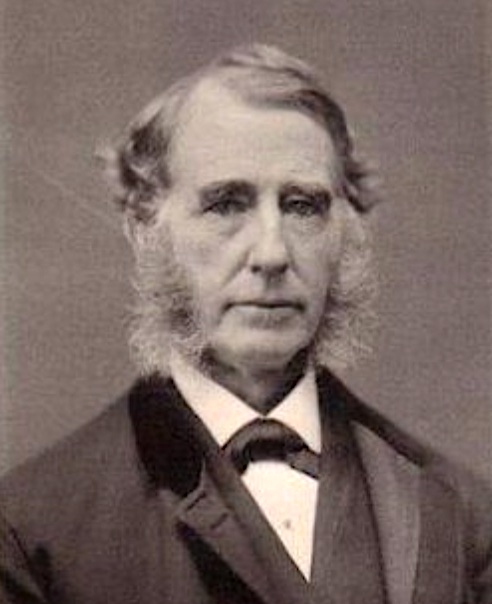
COE, JAMES (1826-1891). Paymaster, United States Navy, Medical Department. Coe was born in New York. As per the Veterans Schedule for 1890, Coe served as a paymaster in the Medical Department of the United States Navy during the Civil War; that document indicates that he served for three years but gives no specific dates. The 1870 census reports that he lived in Brooklyn with his three children, was employed in real estate, and had a personal estate valued at $500. His wife, Luella Coe, who is interred with him, died in 1879. He last lived at 730 Lafayette Street in Brooklyn, the same address listed on the Veterans Schedule of 1890. His death was attributed to paresis. Section 89, lot 9782.
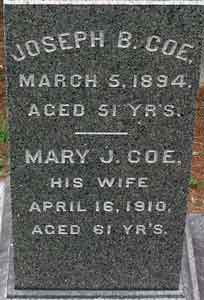
COE, JOSEPH B. (1842-1894). Master’s mate, United States Navy. Coe, a native of New York City, was employed as a clerk when he entered the Navy as a paymaster’s clerk. He served on the gunship Monticello, and was promoted to master’s mate on an unknown date. He saw action in the blockade at Cape Fear, North Carolina, and later became a signal officer. A member of Company D of the 71st Regiment for nine years, he was a second lieutenant, rose to first lieutenant, then declined a promotion to captain.
Admitted to the New York State Bar in 1867, Coe served as deputy clerk of the Court of Common Pleas for nearly a quarter century beginning in 1868. He is listed as a clerk in the Brooklyn Directories for 1876-1878, 1882-1883, 1884-1885, 1885-1886 (where he is identified as a lawyer) and 1891-1892. He was also was a member of the Veteran Corps. The Veterans Schedule for 1890 confirms his service as a sailor. He was a member of Lafayette Post #140 of the G.A.R., and according to his obituary, was a member of Tammany Hall, and was superintendent of the Sunday school at his church.
The son of Edwin Coe (see), who is buried in the same lot, he last lived at 18 West 115th Street in Manhattan. His death, according to a New York Times article on March 6, 1894, came steps from his house where he fell over a railing into a vacant lot and broke his neck. No evidence of foul play was found and it is possible that he suffered a heart attack. . His funeral took place at the Lexington Avenue Baptist Church on 11th Street. An article about his funeral in The New York Times noted that the church was filled to capacity with many unable to enter. The mourners included many judges and former judges, representatives from the Lafayette Post and members of the 71st Regiment’s Veteran Association. Section 36, lot 13394, grave 4.
COFFMAN, JOHN (1816-1890). Private, 15th Regiment, New York State National Guard, Company I. A native of Philadelphia, Pennsylvania, Coffman served as a private in the 15th Regiment for 30 days in 1864. The Brooklyn Directories for 1866 and 1867-1870 and the 1880 census state that he was working as a carpenter. He last lived at 409 Warren Street in Brooklyn. Section 2, lot 5499, grave 1488.
COGAN, MATTHEW (or MATHEW) (1840-1883). Sergeant, 5th New York Heavy Artillery, Battery M; corporal, 5th New York Infantry, Company G. Born in New York City, Cogan enlisted there as a private on April 25, 1861, and mustered into Company G of the 5th New York Infantry on May 9. On October 10, 1862, he was promoted to corporal of his company, detailed to color guard in December of that year, and mustered out at New York City on May 14, 1863. On January 20, 1864, he re-enlisted as a private at New York City and mustered into Battery M of the 5th New York Heavy Artillery. On June 26, 1865, he was promoted to sergeant and mustered out at Harpers Ferry, West Virginia, on July 19, 1865. He may be the Matthew Cogan listed as being in the liquor business in the New York City Directory for 1875-1876. His last residence was 187 Henry Street in Manhattan. Section 200, lot 24163.
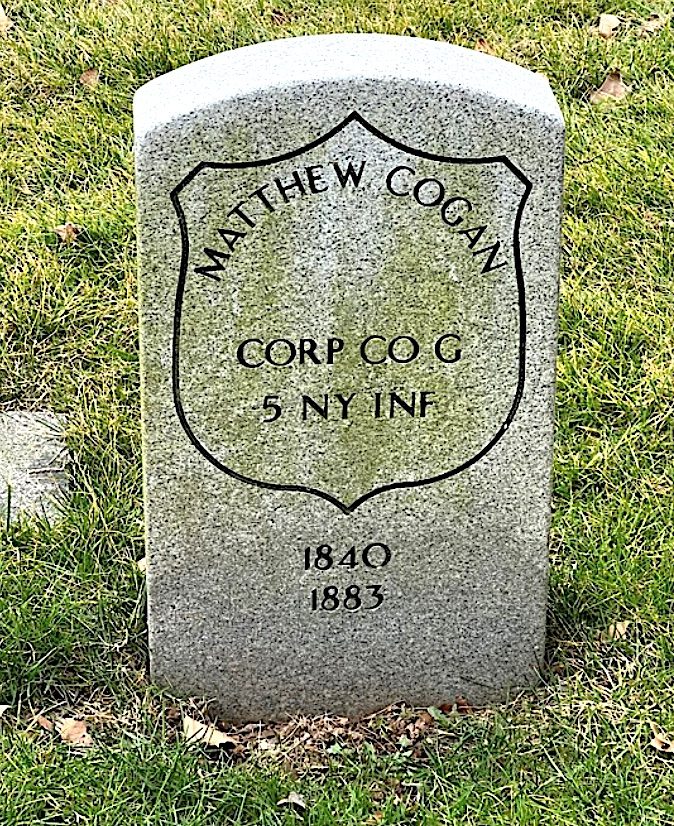
COGGESHALL, EDWARD CLARK (1829-1896). Private, 11th Rhode Island Infantry, Company I. A native of Providence, Rhode Island, Coggeshall was a farm laborer living in Newport, Rhode Island, at the time of the 1860 census. During the Civil War, he enlisted at Providence as a private on September 13, 1862, mustered into the 11th Rhode Island on October 10. The 11th was raised in response to a call for volunteers to serve for nine months and 800 men answered the call, many through the efforts of the Young Men’s Christian Association (YMCA). The ladies of Providence presented the 11th with a flag bearing the motto, “God and the Constitution.”
By October 6, 1862, the 11th was headed for Washington, D.C., then proceeded to Miner’s Hill, where it joined a brigade headed by General Robert Cowdin. The brigade engaged in drills, parades and picket duty intended to toughen the men for the frontlines. The men erected a log cabin at Miner’s Hill in which Sabbath services were conducted and the spiritual and morale-boosting needs of the men were met. In January 1863, the 11th was assigned to guard the Convalescent Camp between Washington and Alexandria, Virginia. In April 1863, the men boarded the USS Hero en route to Norfolk, Virginia, then set out by train to Suffolk. In May, the 11th joined the brigade of General Terry and worked to fortify the defenses. By May 16, the men joined a large force assigned to destroy the Norfolk & Petersburg and the Seaboard & Roanoke Railroads. On May 23, the 11th skirmished with a Mississippi regiment near Blackwater Bridge. From June 12 through June 19, the 11th was in the line of battle near Blackwater but was not called to the front; during that time, the men suffered from the heat and excessive marching. The 11th then left for Williamsburg where the men were assigned to defend the fortifications. On June 30, the 11th was relieved and headed back to Yorktown. The 11th then headed home on the John Rice and reached Providence on July 6, where it was greeted with military honors and provided with a large collation before the men marched to the Fall River Iron Works to surrender their equipment. Coggeshall was discharged with his company at Providence on July 13, 1863; the 11th lost seven men during its nine months of service.
According to the 1870 census, he was living in New York City with his wife Maria and their two children; he was a carpenter with personal property valued at $800. Coggeshall’s Civil War service in Company I of the 11th Rhode Island is confirmed by the Veterans Schedule of 1890. In 1892, his application for an invalid pension was approved under certificate 845,624. On July 8, 1892, he mustered into the G.A.R.; he listed service in Company E of the 11th Rhode Island but it is not known when he transferred into that company. He may have been the brother of Lawton Coggeshall (see). His last residence was at 208 West 38th Street in Manhattan. The cause of his death was myelitis. Maria Coggeshall, who is interred with him, applied for and received a widow’s pension, certificate 438,451. Section 179, lot 13314, grave 5.
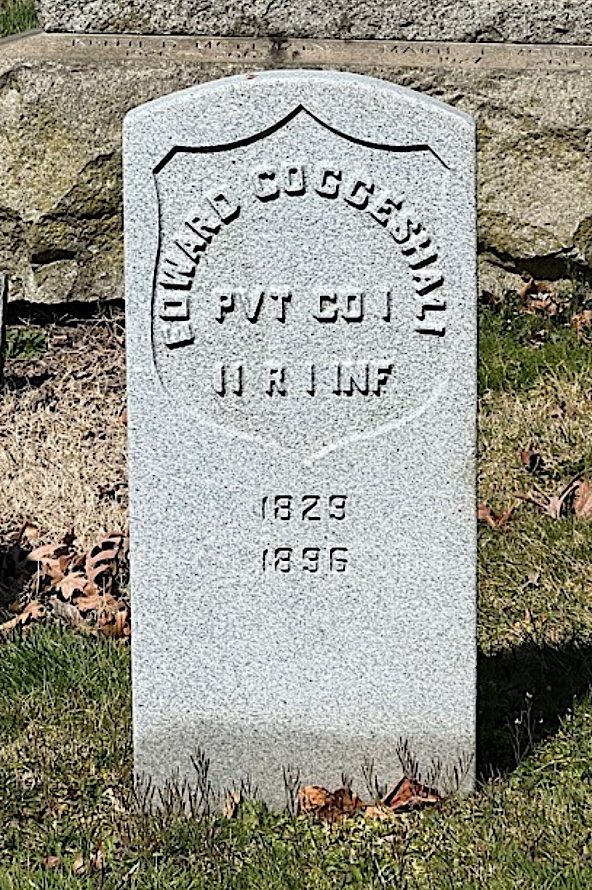
COGGESHALL, LAWTON (1835-1877). Private, 1st Rhode Island Infantry, Company F. Coggeshall was born in Newport, Rhode Island. During the Civil War, he enlisted there as a private on April 17, 1861, and mustered into Company F of the 1st Rhode Island Infantry. He mustered out on August 1, 1861. The Rhode Island State census of 1865 shows that he was a clerk. As per the census of 1870, he was a ship chandler living in Newport, married and having personal property worth $600. The 1879 Newport Directory indicates that he was a ship chandler. The New York Evening Post reported his death in Monticello, Georgia. He may have been the brother of Edwin Coggeshall (see). Section 90, lot 3864.
COGGSWELL (or COGSWELL), THOMAS B. (1839-1874). Private, 71st Regiment, New York State National Guard, Company G. A New York native, Coggswell served for the three months in the 71st Regiment when it was activated in 1862. He last resided at 105 Clinton Street in New York City. Section 114, lot 8999, grave 373.
COHEN, HENRY (1840-1867). Private, 56th New York Infantry, Company E. Originally from Nova Scotia, Canada, Cohen enlisted as a private at New York City on October 26, 1863, and mustered into the 56th New York that same day. He was detached from his unit when his company mustered out at Hilton Head, South Carolina. His last residence was at 341 East 53rd Street in Manhattan. Section D, lot 7078, grave 256.
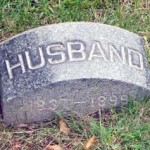
COHEN, WILLIAM H. (1837-1899). Private, 71st Regiment, New York State Militia, Company G. After enlisting on April 20, 1861, Cohen, who was born in New York City, mustered into the 71st Regiment. According to his obituary in The New York Times, he was severely wounded in the first Battle of Bull Run, Virginia, on July 21 of that year. He was discharged on July 30, 1861.
In civilian life, he was employed in the manufacture of canned goods. As per Illustrated New York: The Metropolis of To-day (1888), Cohen was a junior partner in a canned goods business and in 1863, partnered with Mr. S. Lichtenstein as wholesale merchants. Their business, known as William H. Cohen & Co., was known for the production of hermetically-sealed goods and canned all kinds of edibles at the moment of ripeness. Among their products were fruits, vegetables, sardines, salmon and fish of every kind. In addition, the company was known for preserves that were put in jars of up to five pounds and the sale of flavoring extracts of which they were one of the largest manufacturers. The firm was recognized as “first class” and sold their products all over the country. That article notes that from 150-200 people were employed; in addition, there were 10 salesmen at their stores and 10 traveling salesmen. Their factories were in Matawan, New Jersey, Camden, New York, and Yonkers, New York.
Cohen is listed as having a preserve business in the New York City Directory for 1875-1876 and a pickle business at 229 Washington Avenue in the New York City Directories for 1876-1878 and 1882-1883; he is named in the Phillips’ Business Directory for 1881-1882 under the heading of Pickles, Sauces & Preserves. He is identified as being in canned goods at the same Washington Avenue address in the New York City Directory for 1884-1885 and the Brooklyn Directory for 1885-1886; at that time, he lived at 530 Seventh Avenue. He also belonged to a Masonic lodge.
The son of Morris Cohen, he may have been Jewish. He last lived at 83 1st Place in Brooklyn. His death was attributed to caries (decay of bone tissue). His wife, Catherine Cohen, applied for and received a widow’s pension in 1919, certificate 782,743. Section N, lot 19158.
COIT, MASON B. (1827-1865). Corporal, 84th New York (14th Brooklyn) Infantry, Engineers. Coit is listed as a clerk in the Brooklyn Directory for 1857-1862; during those years, he lived at 7 Willoughby Street. Enlisting at age 34 at Brooklyn on April 18, 1861, he mustered into the 14th Brooklyn on May 23, and mustered out on August 28, 1861, at Arlington, Virginia. According to the muster rolls, he was a clerk at the time of his service. He is listed as a clerk in the Brooklyn Directories for 1864 and 1865. He last lived at 296 State Street in Brooklyn. His death was attributed to consumption. Sophia Coit applied for and received a widow’s pension in 1880, certificate 800,483. Section 36, lot 5243.
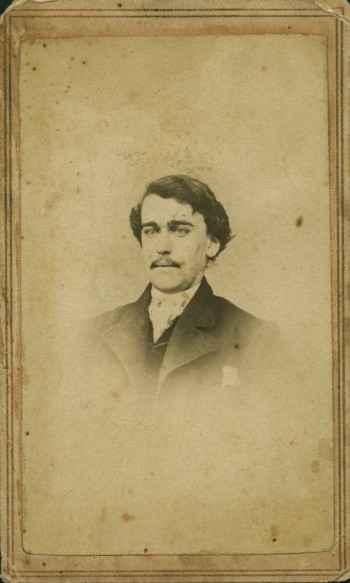
COLBURN, WILLIAM A. (1835-1881). Sergeant, 17th New York Infantry, Company H; corporal, 9th New York Infantry, Company D. Of Irish birth, Colburn enlisted as a corporal at New York City on August 3, 1863, and mustered into the 9th New York on August 29. On October 14, 1863, he transferred into Company H of the 17th New York, was wounded at Jonesboro, Georgia, on September 1, 1864, and was promoted to sergeant of his company on June 1, 1865. He mustered out on July 13, 1865, at Alexandria, Virginia. His 1868 application for an invalid pension was approved, certificate 94,737. He died of consumption in Togus, Maine. In 1882, Jane Colburn, who is interred with him, was granted a widow’s pension, certificate 206,312. Section 203, lot 27198.
COLBY, JOHN H. (1840-1910). Sergeant, 12th Regiment, New York State Militia, Company I. He enlisted in 1861 as a private for a tour of three months with the 12th Regiment and served in Company I. In 1862, he re-enlisted as a third sergeant for another three-month tour, serving in the same regiment and company. He was reduced to the rank of private on an unknown date. Colby applied for and received an invalid pension in 1904, certificate 1,084,446. In 1910, his widow, Georgina Colby, applied for and received a pension, certificate 714,529. He last resided at the Soldiers’ Home, Hampton Roads, Virginia. He died from heart disease. Section 10, lot 5754.
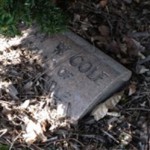
COLE (or CALE), ASHLEY (1841-1920). Private, 44th New York Infantry, Company C. Of English origin, Cole enlisted at Albany, New York, on August 8, 1861, as a private. After mustering into the 44th New York the next day, he was reported as deserting from a ten day furlough on September 15, 1861. However, he may not have deserted since he was transferred on September 5, 1861, with a promotion to the Quartermaster Department as part of the non-commissioned staff.
Cole is listed as a stenographer in the New York City Directories for 1875-1876 and 1876-1878. According to the census of 1880, he was a newspaper reporter. His name appeared on the 1890 Veterans Schedule for Brooklyn. According to the census of 1920, he was living in West Pittston, Pennsylvania. He died there of pneumonia, was first buried at Kensico Cemetery, then re-interred at Green-Wood on June 12, 1921. Section 125, lot 35801, grave 2.
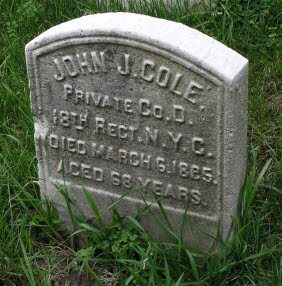
COLE, JOHN J. (1826-1895). Private, 14th New York Cavalry, Companies C and K; 18th New York Cavalry, Company D. Cole enlisted at New York City on November 10, 1862, mustered into the 14th New York Cavalry on December 22, was transferred to Company K on October 16, 1863, and was transferred to the 18th New York Cavalry on June 30, 1865. According to the census of 1880, he was a builder. In 1881, his application for an invalid pension was granted, certificate 308,431. The Veterans Schedule of 1890 confirms his military service and notes that he sustained a saber cut to his hand and arm during an unstated battle. Although his gravestone indicates he was likely born in 1817, his military records indicate that he was born in 1826. He last lived at 331 Bridge Street in Brooklyn. His death was caused by apoplexy. Section 43, lot 6315.
COLE, PETER W. (1832-1909). Private, 9th New York Heavy Artillery, Company A. Cole, a New York City native, enlisted as a private at Red Creek, New York, on August 6, 1862, and mustered into Company A of the 9th New York Heavy Artillery three days later. On June 1, 1864, he was wounded at Cold Harbor, Virginia, and deserted on July 28, 1864, from Satterlee Hospital in Philadelphia, Pennsylvania. The 1890 Veterans Schedule, which confirms his Civil War service, reports that the third finger of his right hand was shot off.
In 1890, Cole lived with his wife Matilda at 356 Smith Street in Brooklyn. The 1890-1892 Brooklyn Directory states that he was a baker who lived at the aforementioned address. As per his obituary in the Brooklyn Daily Eagle, members of the Joppa Lodge, a Masonic organization, were invited to attend his funeral. He last lived at 480 Grand Avenue in Brooklyn. He died from pneumonia. According to his will, he left $1,500 in real property and had a trust account of $3,500. Section 104, lot 6269.
COLE, WILLIAM MADISON (1839-1909). Uncertain soldier history A Brooklynite by birth, Cole was the great-grandson of General Smallwood of the Continental Army. A graduate of the City College of New York, Cole’s obituary in the Brooklyn Standard Union notes that he was a Civil War veteran. As per his obituary in the Brooklyn Daily Eagle, he enlisted in April 1861 and served with the 71st Regiment New York State Militia. That obituary notes that he fought at the Battle of Bull Run, Virginia, received a commission as a lieutenant and served for two years in North Carolina and Virginia. Though the 71st was activated for only 30 days in 1861, he may also have served with it in 1862 and 1863, when, as the New York National Guard, it was activated for three months in each of those years, it is feasible that he served with other units. It also is possible that he was an adjutant in the 164th and 158th New York Infantries, in which a man by that same name served. If he is that William M. Cole, an age-match, then he enlisted at Albany, New York, on July 29, 1862, was commissioned as an adjutant in the Field and Staff of the 164th New York that day, and was discharged on October 18 of that year. He may also have re-enlisted as a private on December 22, 1862, was commissioned into Company B of the 158th that day and was dismissed on March 9, 1864.
In April 1865, Cole married Mary J. Eadie, about the same time that he began his thirty-five year association with the Brooklyn Life Insurance Company, of which he was president for 25 years. The 1870-1873, 1873-1876 and 1876-1878 New York City Directories note that he was secretary of the Brooklyn Life Insurance Company at 320-322 Broadway; in the last named directory, he lived at 248 Dekalb Avenue. An article in the Brooklyn Daily Eagle on July 13, 1881, notes that Cole was the vice president of the Board of Education and that prior to his affiliation with the Brooklyn Life Insurance Company from its inception, he was a schoolteacher and was acting principal of P.S. 2, a large school in New York City. Cole was first appointed to the Board of Education by Mayor Samuel Powell, who served from 1875-1876, then reappointed to his position. That article noted that he was well-liked and respected for his gentlemanly manner, courtesy to others and ability to express his opinions in a frank and high-spirited manner, always showing the courage of his convictions. His obituary notes than he served on the Board of Education for ten years and was chairman of the committee that organized high schools.
As per the Brooklyn Directories for 1880-1882 and 1885-1886, he was president of the Brooklyn Life Insurance Company; at the time of the latter directory, the business was at 51 Liberty Street in Manhattan. He is listed as a trustee of the Peoples Trust Company at 172 Montague Street in the Brooklyn Standard Union on September 3, 1896.
His obituary notes that he cared deeply about the welfare of Brooklyn. He was appointed president of one of the elevated railroad commissions by Mayor Daniel Whitney, who served from 1886-1887, and was named a member of the first Board of Elections, but was ineligible to serve because he then was serving on the Board of Education. A Democrat, he was a member of the Kings County Democratic General Committee and a member of the New York Chamber of Commerce. Active in many civic organizations, Cole was a member of the Sons of the Revolution, the University Crescent, Montauk and Oxford Clubs, and the St. Nicholas Society. An avid traveler, his last address was 44 Pierrepont Street in Brooklyn, although he maintained a residence at the Waldorf Astoria Hotel in Manhattan. Cole died from cancer at Seney Hospital. His funeral took place at the Church of the Messiah on Greene and Clermont Avenues. A widower, he was survived by three sons. Section 166, lot 29349, grave 2.
COLEMAN, JAMES (1848-1902). Private, 52nd Regiment, New York State National Guard, Company H; 56th Regiment, New York State National Guard, Company G. Coleman first served for 30 days with the 52nd Regiment from June 1863, when it was sent to Harrisburg, Pennsylvania until July 25 when it mustered out at Brooklyn. In 1864, he was part of the 56th Regiment when it was activated for 100 days from August 2 through November 6.
In 1891, his application for an invalid pension was approved under certificate 821,753. According to the census of 1900, he was employed as a station engineer. A member of W. W. Stephenson Post #669 of the G.A.R., his obituary states that he also belonged to the Brooklyn Engineers’ Association. He last lived at 10 Kensington Terrace in Brooklyn. His death was attributed to diabetes. Shortly after his death in 1902, Ellen Coleman applied for and received a widow’s pension, certificate 543,769. Section 114, lot 8999, grave 38.
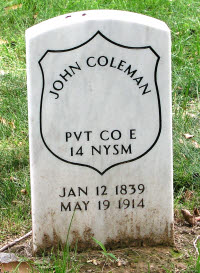
COLEMAN, JR., JOHN (1839-1914). Private, 84th New York (14th Brooklyn) Infantry, Company E. A lifelong resident of New York City, he enlisted at Brooklyn on April 18, 1861, and mustered in on May 23. He was taken prisoner on August 28, 1862, at Gainesville, Virginia (missing in action), and was later paroled. He mustered out on June 6, 1864, at New York City. After the War, he was a clerk. Coleman’s application for an invalid pension was granted, certificate 280,763. His last residence was at 13 Pineapple Street, Brooklyn. He died from apoplexy. Section 13, lot 9277.
COLER, WILLIAM NICHOLS (1827-1911). Colonel, 25th Illinois Infantry. Coler was born in Mt. Vernon, Ohio, and served with the 2nd Regiment of the Ohio Volunteers in the Mexican War. A resident of Urbana, Illinois, and active in the real estate business, he co-started the first newspaper in Champaign, Illinois, in 1852, and studied and practiced law. During the Civil War, Coler raised the 25th Illinois, enlisted as its colonel on August 7, 1861, and was commissioned into the Field and Staff on August 21. In his field report describing the Battle of Pea Ridge, Arkansas, on March 6-7, 1862, he wrote of the difficult Union victory two days later, “By this time several regiments on my left were closely engaging the enemy. The thunders of the artillery and the incessant volleys of musketry from both our own and the enemy’s lines argued to me that victory was trembling in the balance.” He resigned on August 31, 1862.
Coler then resumed his business in Illinois and moved to New York in 1872, where, according to Pioneers of Champaign County, was prosperous and lived a luxurious life. Prominent in the financial world with the son who bore his name, they had a successful brokerage that traded municipal bonds. He and his son are listed as brokers in the New York City Directories for 1876-1878, 1882-1883, 1884-1885; their office was at 17 Nassau Street and then at 9 Duncan Building. As per the Brooklyn Directory for 1884-1886 and the New York City Directory for 1889-1890, the brokerage was at 11 Pine Street; all of the directories show a home address at 50 Monroe Place for the father and son. Another son, Bird Coler, was a borough president of Brooklyn and active in the Democratic Party. Coler was a widower; his wife, Cordelia Sim Coler, who is interred with him, died in 1886, and a third son died at age 15 in 1880. He died in Interlaken, Switzerland, but last lived in Brooklyn. Section 140, lot 25616.
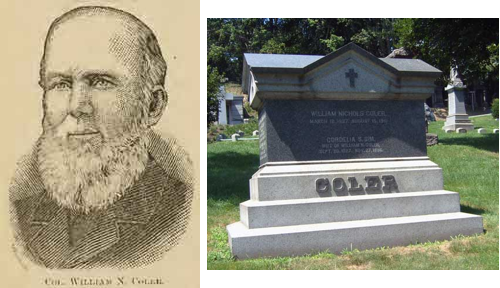
COLGAN, JR., DOMINICK (1842-1875). Private, 84th New York (14th Brooklyn) Infantry, Company B, or private, 14th New York Cavalry, and private, 164th New York Infantry, Company A. There were two men of the same age and name listed in the 1850 Brooklyn census. One, a Brooklynite by birth and machinist by trade, enlisted at Brooklyn as a private on April 18, 1861, and mustered into the 14th Brooklyn on May 23. According to the muster rolls, he was absent without leave from June 13, 1863, and returned to the rolls on October 18. He was sentenced to a $10 pay deduction after he was court-martialed. He mustered out on June 6, 1864, at New York City. Another Dominick Colgan of the same age and a carpenter by trade, enlisted in the 14th Cavalry at New York City as a private on November 21, 1862. As per his muster roll, he was 5′ 4″ tall with blue eyes, light hair and a light complexion. That Colgan, mustered into the 14th New York Cavalry on December 4 and deserted six days later at New York City. Then, two days later, a Dominick Colegan, who likely was the same man who had just deserted from the 14th Cavalry, enlisted at Brooklyn and was discharged for disability at Washington, D.C., on January 25, 1864.
One of the Dominick Colgans was the son of a saloon-keeper on Clinton Street in Brooklyn and was involved in a family dispute in 1874 when his father wanted to retake control of the pub from another son, James, to whom he had transferred ownership in 1872. Dominick Jr. and his father were sued by James Colgan for $3,000, the value of the stock and fixtures. He last lived at 23 Clinton Street in Brooklyn. His death was attributed to tuberculosis. Section 101, lot 5858.

COLGATE, CLINTON GILBERT (1834-1886). Colonel, 15th New York Engineers; private, 7th Regiment, New York State Militia, Company C. Before the War, Colgate worked as a purser on an ocean steamer. He mustered in as a private with Company C of the 7th New York State Militia in April 1861, and transferred to the 15th New York Engineers as a major on June 19. Colgate was quickly promoted to lieutenant colonel that August and then became colonel in November 1862. A participant in the battles of the Peninsula Campaign, he laid the pontoon bridge across the Rappahannock at the Battle of Fredericksburg, Virginia, and at Banks’s Ford and United States Ford. During his service, he volunteered to command the dismantling of the works at Aquia Creek, Virginia, for which he received public praise from General G. K. Warren who wrote that as a result of this service “much public property and many lives were saved.” He mustered out with his regiment on June 20, 1863.
In the 1880 census, Colgate was listed as a stockbroker. He also had a career with the United States Internal Revenue Service. His last residence was at 170 West 59th Street in New York City. He died from alcoholism. Fanny Eastman Colgate applied for and received a widow’s pension in 1888, certificate 254,123. Section 83, lot 3361.
COLGATE, JOHN H. (1826-1916). Corporal, 127th New York Infantry, Company B. A New York City native and a lawyer by profession, Colgate was 5′ 6″ tall with hazel eyes, dark hair and a dark complexion. He enlisted at New York City on August 18, 1862, and mustered into the 127th New York on September 8. According to the muster rolls, he was sick in Armory Square Hospital in Washington, D.C., on June 30, 1863. He received a promotion to corporal on November 1, 1863, and was detailed to recruiting duty in New York until the end of the year. Colgate was reduced to ranks on June 1, 1864, detailed as a clerk in Beaufort, South Carolina, in November 1864, then detailed as a clerk at Post Headquarters in March 1865, and mustered out with his regiment on June 30, 1865, at Charleston, South Carolina.
As per the Brooklyn Directory for 1867-1870, he was in the soap business (likely owned by relatives—Colgate Soap, what is today Colgate-Palmolive) at 60 John Street in Manhattan; he lived during those years on Degraw Street in Brooklyn. According to the 1870 census, he was a soap company collector with real estate valued at $10,000. The Veterans Schedule of 1890 confirms his military service. A member of the Lafayette Post #140 of the G.A.R., he also was a Freemason. He received a pension in 1904, certificate 1,100,941. As per his obituary in The New York Herald, members of his Masonic lodge, of which he was a charter member, were “earnestly requested” to attend rites in his honor. Members of the Lafayette Post were also invited to attend his funeral. He last resided at 114 West 84th Street, New York City. He died of heart disease, a month short of his ninetieth birthday. His funeral took place at the Madison Avenue Baptist Church at Madison Avenue and East 31st Street. A widower, his wife, Frances, died in 1870 and their two children died as youngsters in the 1860s. Section 53, lot 13557.

COLGROVE (or COLGRAVE), DANIEL (1826-1875). Sergeant, 173rd New York Infantry, Company I. According to the census of 1850, Colgrove, a native of Charleston, New York, was a grocer; in 1860, he earned a living as a distiller. At the time of his enrollment, he was a merchant who was 5′ 8½” tall with blue eyes, auburn hair and a fair complexion. After enlisting as a corporal at Brooklyn on September 3, 1862, Colgrove mustered into the 173rd on November 10. He rose to the rank of sergeant the next month on December 10, contracted typhoid fever at Brashear City, Louisiana, on April 1, 1863, was detached to the division commissary from October 1864 through March 1865, and mustered out at Savannah, Georgia, on October 18, 1865.
In 1870, the census recorded his occupation as railroad conductor. At some point in 1875, he was a resident of the Home for Disabled Soldiers in Dayton, Ohio. Paperwork from the home notes that he had a son, John, who needed assistance, and that he suffered from rheumatism as a result of his wartime service. Colgrove last lived at Franklin House on Fulton Street in Brooklyn where his sudden death was widely reported in local newspapers. An article in the Daily Tribune on August 13, 1875, notes that he was found at the boarding house, dissipated and impoverished, dead in his bed, a suicide by poisoning. However, another article that same day in the Herald states the cause of death as possible heart failure. The Brooklyn Daily Eagle concluded that day that a post mortem by the coroner attributed his demise to excessive alcohol. Section 81, lot 4854.
COLLAMORE, GILMAN (1834-1888). Private, 7th Regiment, New York State Militia, Company D. Gilman was born in Massachusetts to a family that settled there in 1639; Wikipedia notes that there were 12 children in his family, another document about the Founders of the Oranges by Lannan Gallery reports sixteen children. His 1834 birth is recorded in the Compiled Birth, Marriage and Death Records of Scituate, Massachusetts, 1700-1850. As per the 1850 census, Gilman and an older sister, Amanda, lived with their parents, John (age 75) and Polly (age 60) in South Scituate, Plymouth, Massachusetts. At age 16, he was listed as a farmer; James and Cynthis Dwelley, aged 24 and 22 (relationship unknown), also lived in the household. John Collamore, his father, who inherited the family estate, was a selectman, justice of the peace, assessor, county commissioner and committee member of the State Constitutional Convention of 1820.
Three of the Collamore sons relocated to New York City where all engaged in the sales of luxury china and glass, beginning with Ebenezer and then Davis in 1836. In 1854, Gilman joined his brother Davis who had started his own business in 1842 (which was later renamed Davis Collamore & Co.), at 595 Broadway in New York City. The brothers imported high end pottery and glass and commissioned designs that featured hand-painting and rich gilding. Gilman opened his own business in 1861 that bore his name at 731 Broadway, later moving to Union Square and then Fifth Avenue and 30th Street. Davis Collamore, who summered in West Orange, New Jersey, purchased an estate there, named Bellhurst, in the 1860s and is considered one of the founders of the Oranges. Gilman is also listed in the title of the document about the Founders of the Oranges but no mention is made of his property there.
As per the History of the Seventh Regiment of New York 1806-1889 by Colonel Emmons Clark, Gilman served as a private in the 7th Regiment of the New York State Militia, Fourth Company (Company D), when it was activated on April 19, 1861, for service of 30 days. His Draft Registration Record on July 1863 states that he was 29 years old, lived in New York City, was unmarried and in the crockery business.
On June 6, 1864, Gilman married Mary Alethea Jenkins in New York City, as per his family history. However, the Barber Collection of New York Marriage Extracts records that the marriage took place at the Madison Avenue Baptist Church on June 7 and was featured in the New York Evening Post on June 9. Find A Grave notes that Mary died in 1872 and that Gilman then married Elizabeth Topping Masters (sic) Bischoff. The Marriage Extract reports his marriage to Bessie T. Master on November 22, 1879. Collamore and his wives had three children: Kittie (born 1865), Gilman (born 1871) and Betty (born 1883).
As per the 1870 census, G. Collimore (sic) is incorrectly documented as being born in New York; he is listed as a crockery merchant. Collamore is named in Guilding’s Business Directory of 1871-1872 with an address of 711 Broadway. The passenger manifest from the Java lists that Gilman had arrived in New York City on July 17, 1872, having sailed from Liverpool, England, and Queenstown, Ireland, presumably for his import business. The 1880 census, which incorrectly lists a New Jersey birthplace, reports that he was married and was living at 256 East 18th Street in New York City. His employment was the crockery business. The 1883 City Directory names the business of Gilman Collamore & Co. at 19 Union Square (ad below).
He last lived at 160 West 59th Street in New York City. His death was attributed to pneumonia. The inscription on the plaque atl his grave reads: “In Memory of Gilman Collamore, Our Pop- The kindest and gentlest soul that ever lived. Next to his family, he loved baseball best, and now that his game of life is over, the great umpire has called him safe home.” His death is listed in the New York Episcopal Church Records. Section 151, lot 17745.

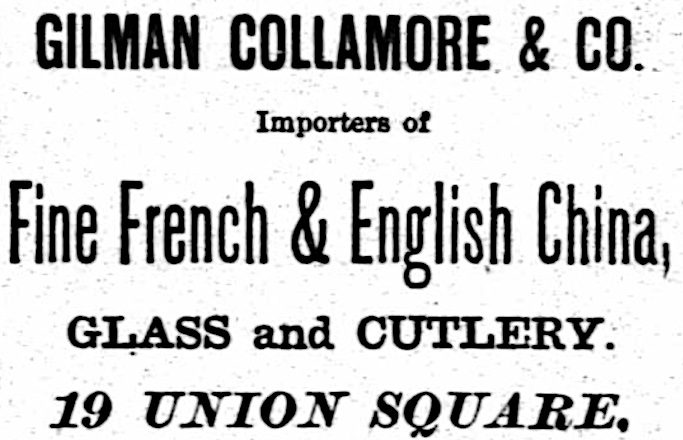

COLLES, GEORGE WETMORE (1836-1911). Private, 22nd Regiment, New York State National Guard, Company A. Born in New Orleans, Louisiana, his father was a merchant and was appointed president and director of the Bank of the United States there, a position he held until 1835. The family moved to New York in 1840 and also owned an estate in Morristown, New Jersey, named “The Evergreens”; they originally built the house in Morristown because of the danger of malaria in New Orleans. George W. Colles graduated from Yale University in 1857, subsequently studied at Harvard University and New York University, and was admitted as an attorney to the New York State Bar in 1860. During the Civil War, he enlisted as a private at New York City on May 28, 1862, mustered into the 22nd the same day, and mustered out after three months at New York City on September 5. He also served for 30 days with the regiment in 1863.
In 1867, Colles married Julia Keese Nelson; the couple had three children but separated in 1886 at which time Colles relocated to New York City. Colles is listed as a lawyer with a practice in Manhattan in the Brooklyn Directories for 1877 and 1885-1886; his home was in Morristown, New Jersey. He also served as alderman in Morristown in 1880, where he lived with his father. Upon his father’s death in 1884, Colles inherited one quarter of his father’s estate.
After being in practice with an unblemished record for many years, he became embroiled in scandal in 1888-1889. The controversy involved a young woman who accused him of defrauding her of about $8,000 while he claimed that she held a revolver to his head to sign receipts for money he never received. (He was the lawyer for a house that she purchased.) She also claimed to have love letters that he penned to her. In an article in the World on December 27, 1889, he was described as medium-sized, well-dressed with gray hair and a moustache. On January 31, 1889, an article in the Tribune stated that a jury failed to indict him on the charges. He stopped practicing in 1889.
In 1890, his application for an invalid pension was granted under certificate 868,809. His wife, Julia Keese Colles, a founder of the women’s branch of the New Jersey Historical Society, was an author and lecturer in Morristown and their daughter, Gertrude Colles, was a miniature portrait painter. The Colles Family Papers are stored at the North Jersey History & Genealogy Center in Morristown and are available at the New York Public Library, Humanities and Social Sciences Library, Manuscripts and Archives Division. He last lived at 2 Fort Greene Place in Brooklyn. Section 104, lot 9647.
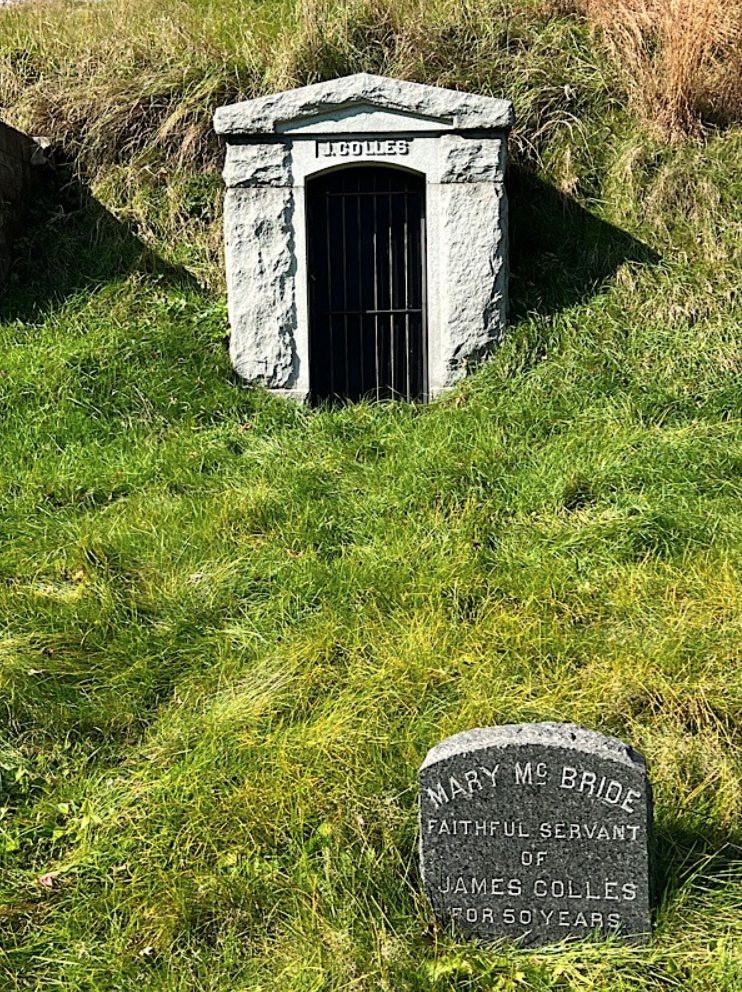
COLLIE (or COLLEY), WILLIAM (1837-1864). Private, 4th New York Heavy Artillery, Battery E. Born in Scotland, he was listed as a bookbinder in the Brooklyn Directory for 1857-1862. He enlisted at Brooklyn on March 8, 1864, and mustered into the 4th New York Heavy Artillery on that date. Borne on the muster rolls as William Colley, he was 5′ 7¼” tall with blue eyes, brown hair and a light complexion. After suffering a gunshot wound at Petersburg, Virginia, on June 18, 1864, he succumbed six days later at City Point, Virginia. A pension for a minor was granted to the minor’s guardian, William Collie Sr., on July 5, 1864, certificate 116,541. Collie was interred at Green-Wood on December 1, 1864. Section 115, lot 13536 (Soldiers’ Lot), grave 95.
COLLINS, EDWARD P. (1825-1872). Third lieutenant, United States Revenue Marines. Collins was appointed third lieutenant in the Revenue Marines on March 7, 1865. Remaining in service after the Civil War, he was promoted to second lieutenant on June 6, 1866, and to first lieutenant on June 23, 1868. No further record of his service has been found. His last residence was at 128 Columbia Street in Brooklyn. Section 71, lot 840.
COLLINS, ELLEN (1828-1912). Civil War volunteer, Woman’s Central Association of Relief. Born in New York City, Collins lived there her entire life. Her mother was a Minturn (one of the leading merchant families of that city), and her father was descended from Quakers. She performed extensive charitable work during the Civil War, heading a committee of the Woman’s Central Association of Relief (a part of the United States Sanitary Commission) charged with distributing supplies to sick and wounded soldiers. She had a deep affection for the women who contributed to the war effort and wrote in her report of May 1862, “Throughout the heat of summer and the storms of winter, seed time and harvest, the little sewing circles of twelve or fifteen members have kept up their weekly meetings. ‘Ours is a little village and we are poor, but if anything more is wanted, do not hesitate to called upon us again.’ Only those who have seen these letters, all breathing the same spirit of love and patriotism, from the little villages and towns hundreds of miles away, can appreciate the sacrifices and the noble spirit of these true-hearted, loyal women.”
As per Woman’s Work in the Civil War: A Record of Heroism, Patriotism and Patience by L. P. Brockett, M.D. and Mary C. Vaughn (1867, e-book 2007), she was acknowledged in 1863 for working daily from 9:00 a.m. to 6:00 p.m. and then at home, to keep accurate tables delineating the supplies received and their disbursement for monthly reports; it had been established that a steady intake of materials was needed without waiting for an immediate need after a battle. She kept up her work during the New York City Draft Riots in July 1863.
Upon General Lee’s surrender in April 1865, Collins thanked the Aid Societies who contributed to War effort and announced that Women’s Central would close on July 4, 1865, keeping up their efforts until then for “the privilege of cherishing the maimed and disabled veterans who are returning to us.” All told, from May 1, 1861 through July 7, 1865, 291,475 shirts were distributed to soldiers. The women, who were patriots but frugal, only spent $161,386.57 on distribution, office expenses, purchase of hospital delicacies plus monies for the Aid Societies during the course of their work. After the Civil War, she went to Virginia on behalf of the New York National Freedman’s Relief Association and inspected schools that had been set up for the education of African Americans. Collins encouraged New York women to support that organization’s goals.
In 1876, Collins was appointed visitor of public charitable institutions for New York County, and in that position she inspected New York City’s hospitals, poorhouses, and other charitable institutions. She also supported and developed a friendship with Booker T. Washington, the founder of the Tuskegee Institute. Her greatest fame came from the twenty-three years she spent rehabilitating and managing seven old tenements on the Lower East Side, near where she was born. Demanding prompt payment of rent, cleanliness, and sobriety, she reduced rents and rented to the least wealthy citizens of her native city. Her example of private effort to provide low cost housing, requiring intense personal involvement and sacrifice, was not widely copied. She became a Quaker in 1899. Her estate of $200,000 was bequeathed to various charities, including the New York Society of Friends and several black educational institutions. Section 44, lot 5625.
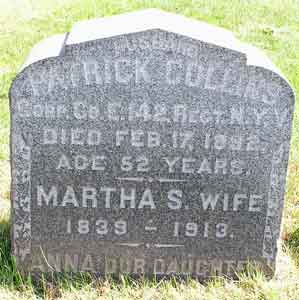
COLLINS, PATRICK (1838-1892). Corporal, 142nd New York Infantry, Company E. Collins enlisted as a private at Oswegatchie, New York, on August 25, 1862, and mustered in on September 29. He was promoted to corporal on September 15, 1863, and mustered out on June 7, 1865, at Raleigh, North Carolina. Collins last lived at 6 4th Place in Brooklyn. His cause of death was pneumonia. In 1892, Martha Collins, who is interred with him, applied for and received a widow’s pension, certificate 355,982. Section 135, lot 27263, grave 958.
COLLINS, THOMAS J. (1844-1880). Private, 55th New York Infantry, Company G. A New York native, Collins was a clerk at the time of the census of 1860. He enlisted as a private at New York City on November 23, 1861, mustered into the 55th New York three days later, and was discharged from military service about May 30, 1862. In 1870, the census lists his occupation as ship carver; the mortality table for 1880 noted that he was a card finisher, a machine operator who wound or twisted textiles. His last residence was 81 Raymond Street in Brooklyn. He died from Bright’s disease. Section 14, lot 9106.

COLLINS, WILLIAM H. (1842-1904). Private, 7th Regiment, New York State Militia, Company G; 74th New York National Guard, Company D. Collins, who was born in New York State, enlisted as a private on April 12, 1861, served for 30 days with the 7th Regiment, and mustered out with his company on June 3. After re-enlisting as a private in 1863, he served for 30 days with the 74th Regiment, and mustered out at the end of his term. In 1904, he applied for an invalid pension, application 1,318,034, but he died of a cerebral hemorrhage before it was certified. His last residence was 380 Bergen Street in Brooklyn. Section 14, lot 9106.
COLLINS, WILLIAM T. (enlisted as MAYO, WILLIAM HENRY) (1844-1901). Private, 84th Regiment, New York State National Guard, Company C. According to a descendant, Collins’s ancestry could be traced to Governor William Bradford, who came on the Mayflower and was the governor of Plymouth Colony. He enlisted as a private for a 100-day tour of duty in August 1864, at Fort Albany, Virginia, and mustered into Company C of the 84th New York State National Guard. At the time of his enrollment, he used the alias “William Henry Mayo.” His alias is the name used in his soldier history. On October 30, 1864, he mustered out of service at Fort Albany. In 1892, Collins applied for a service pension, was asked to prove that he was the same person (Mayo), and many of his soldier mates deposed for him. Based on their statements, he was awarded his pension under certificate 945,158. His half-brother, Henry Percy Mayo (see), also served in the War. Collins last resided at 78 Carroll Street in Brooklyn. The cause of his death was apoplexy. Section 67, lot 1934.